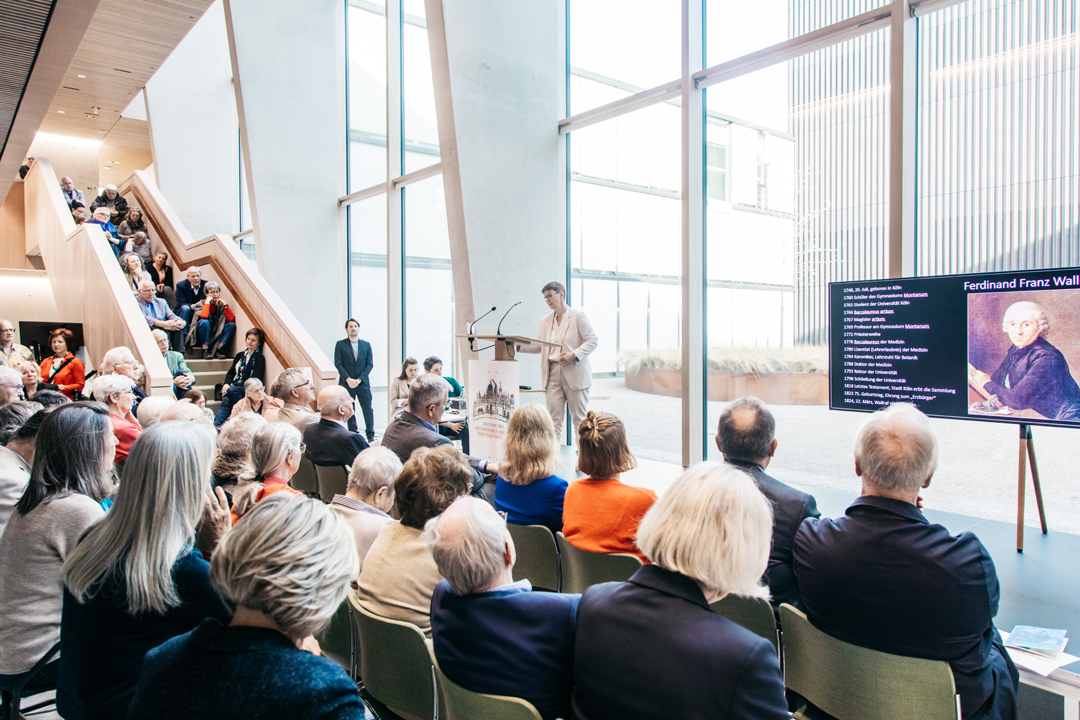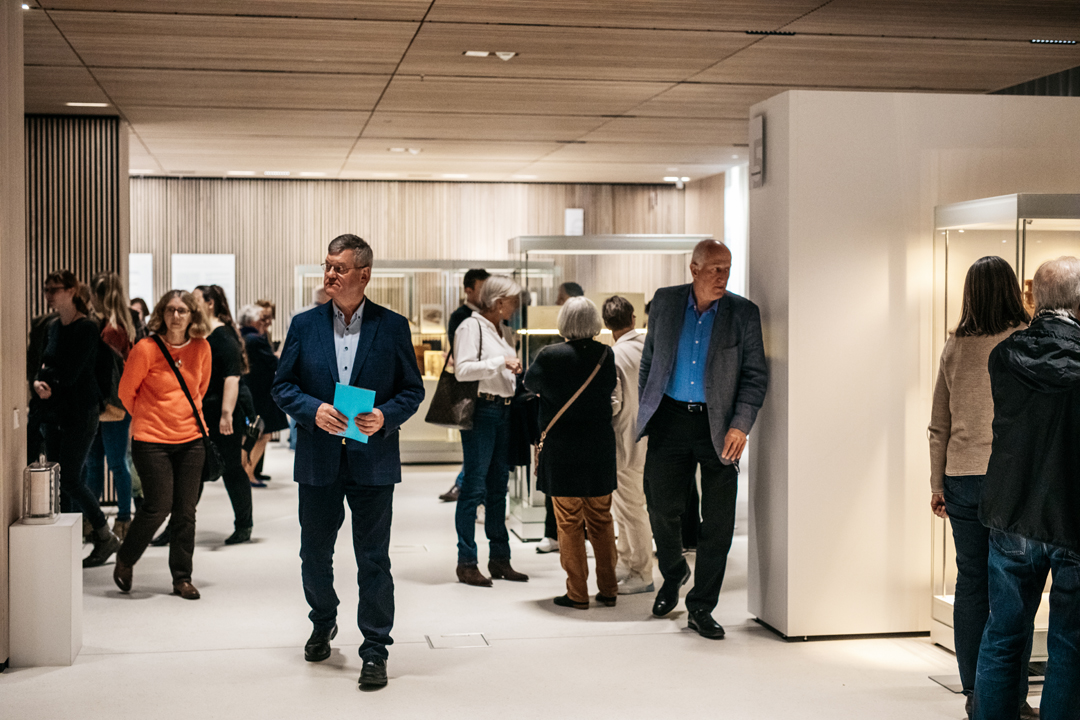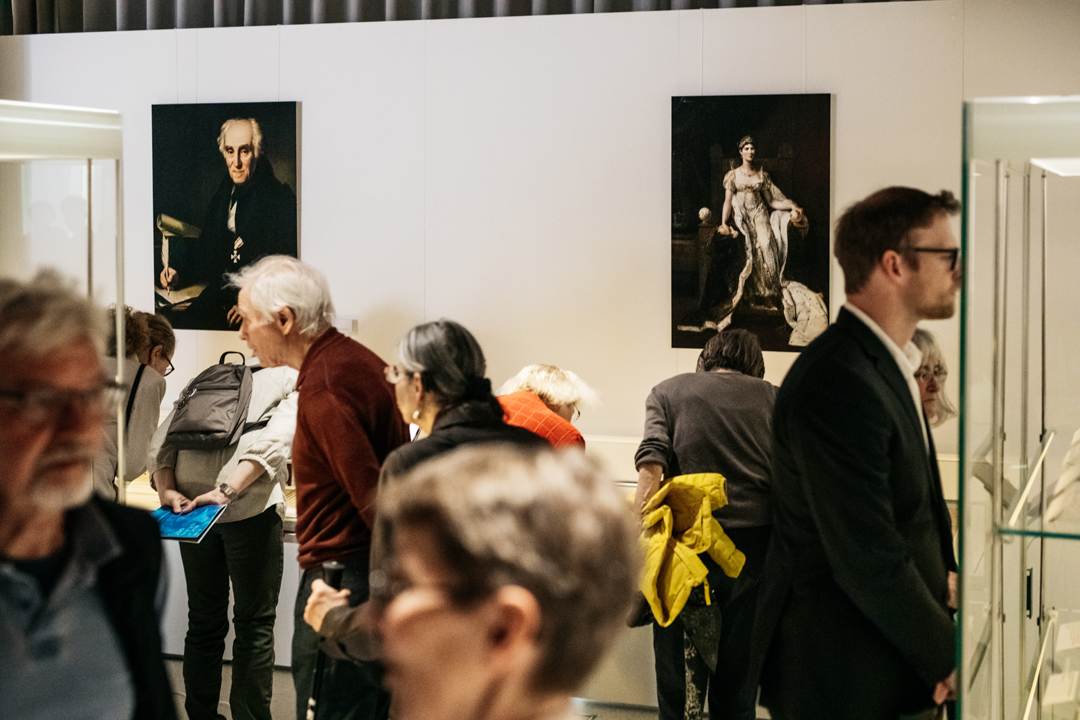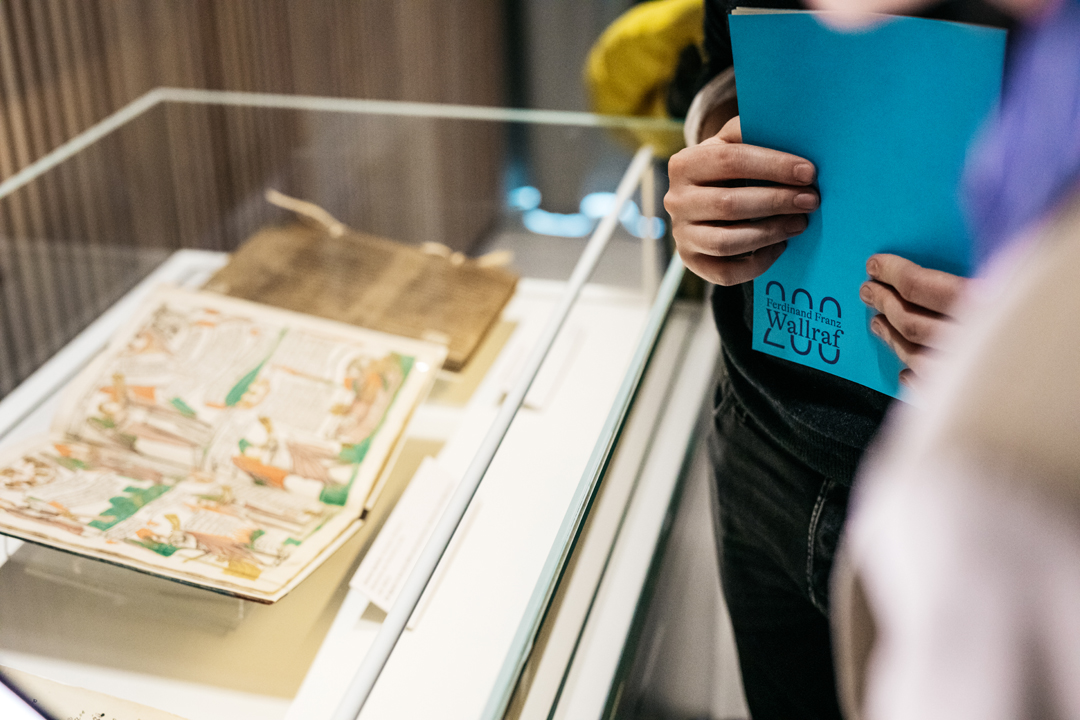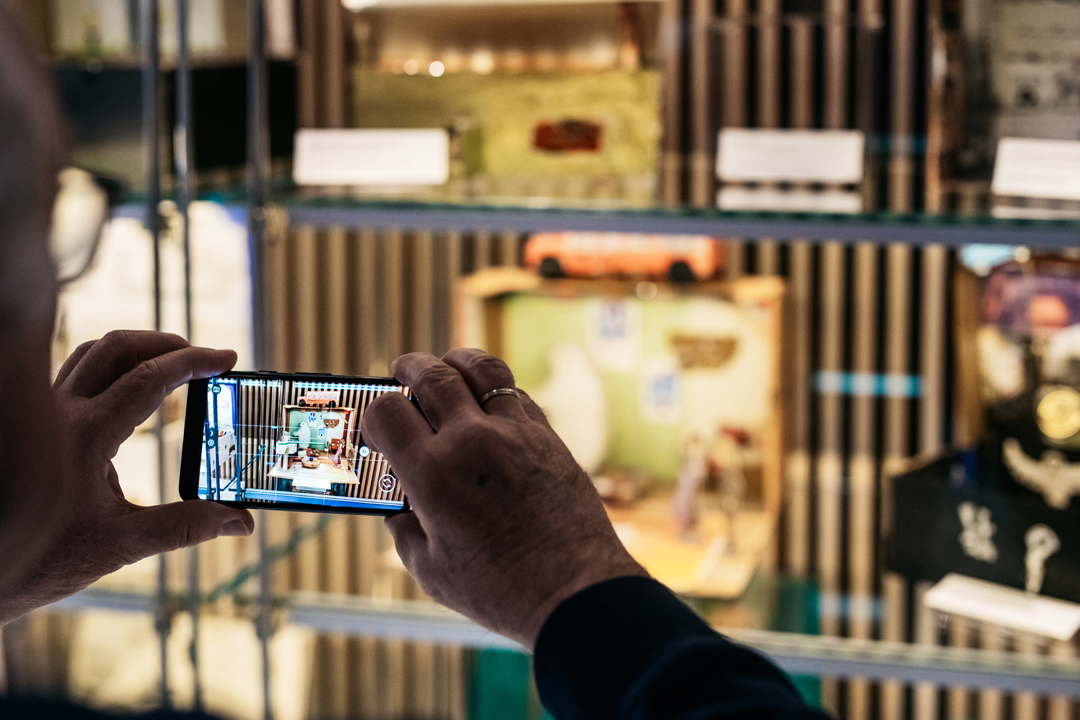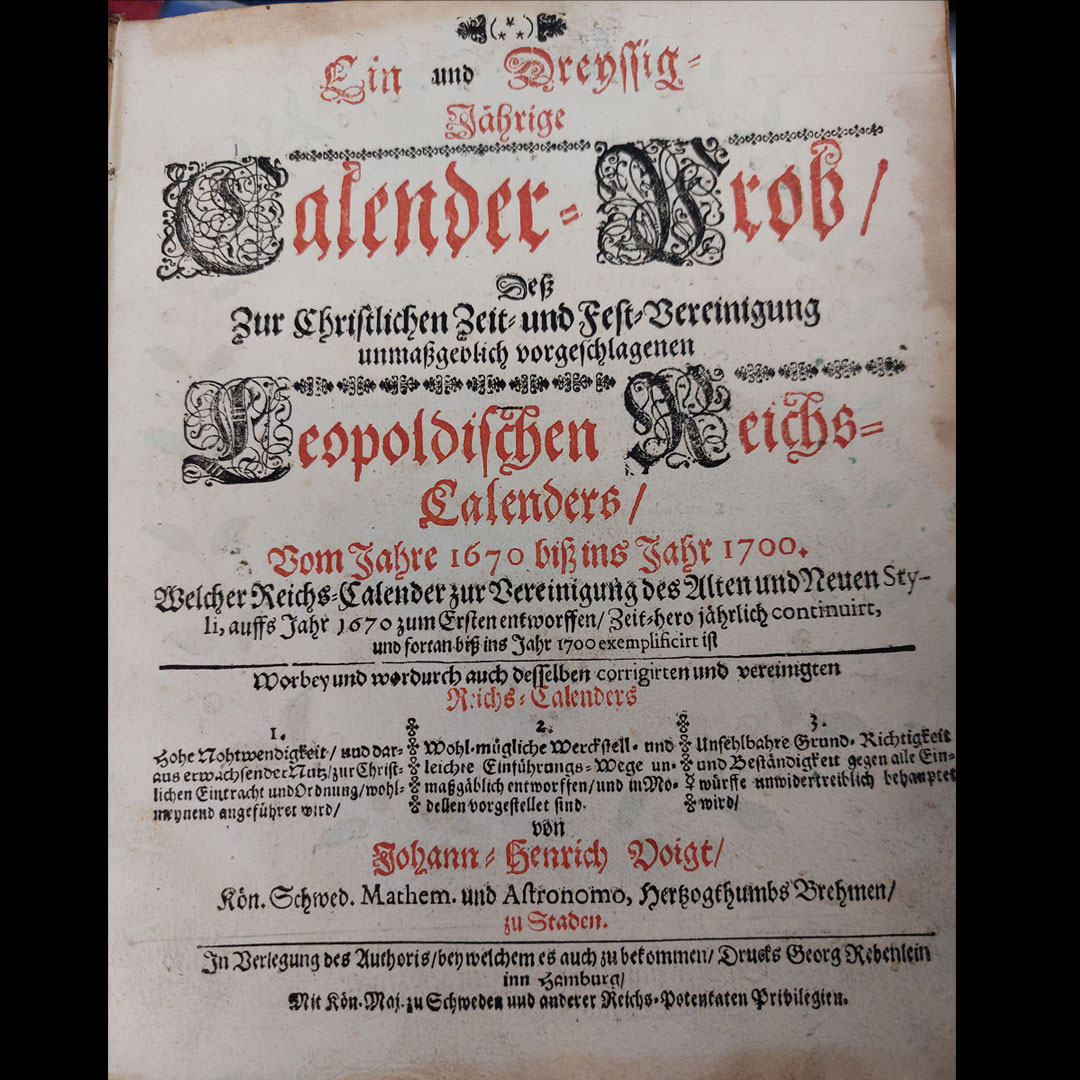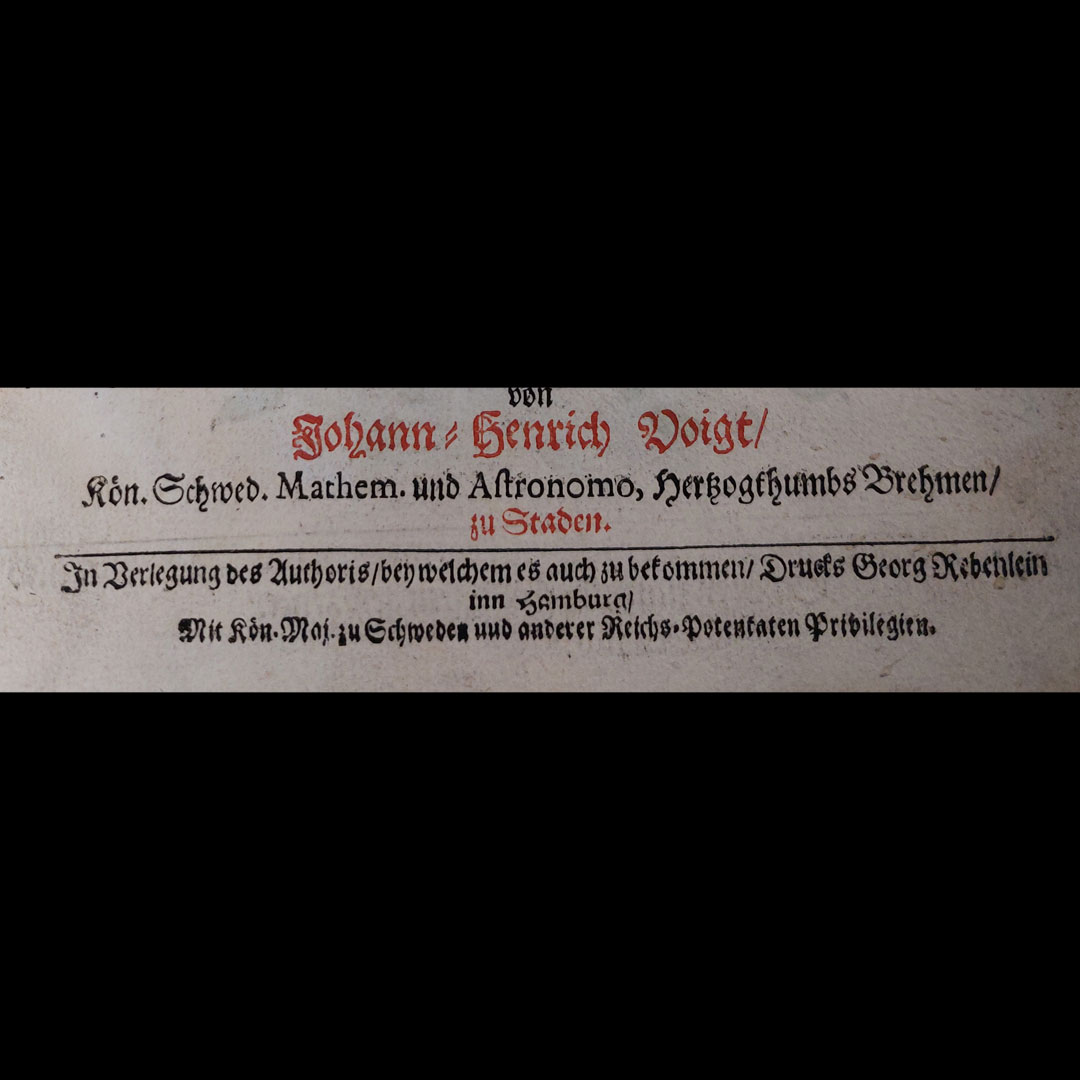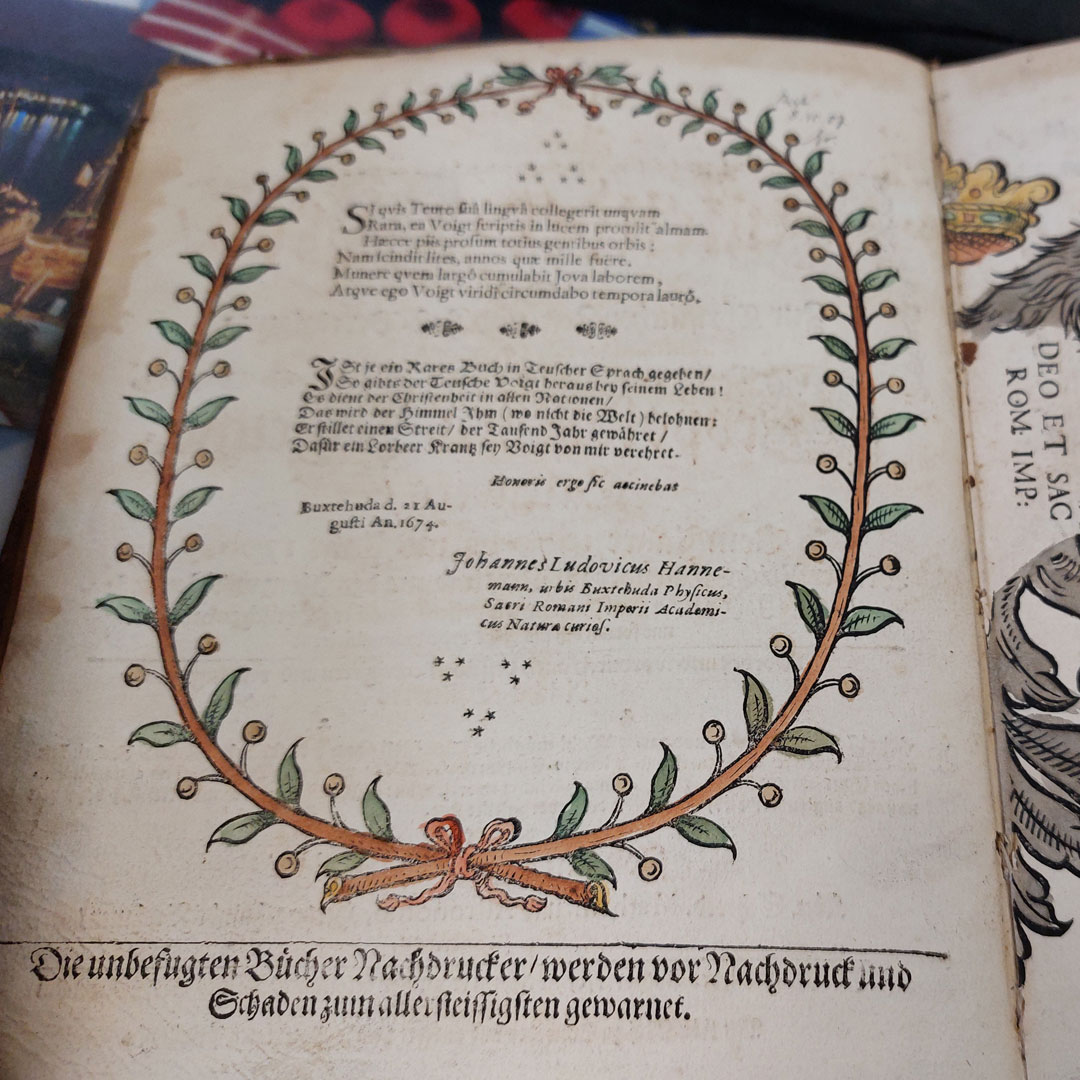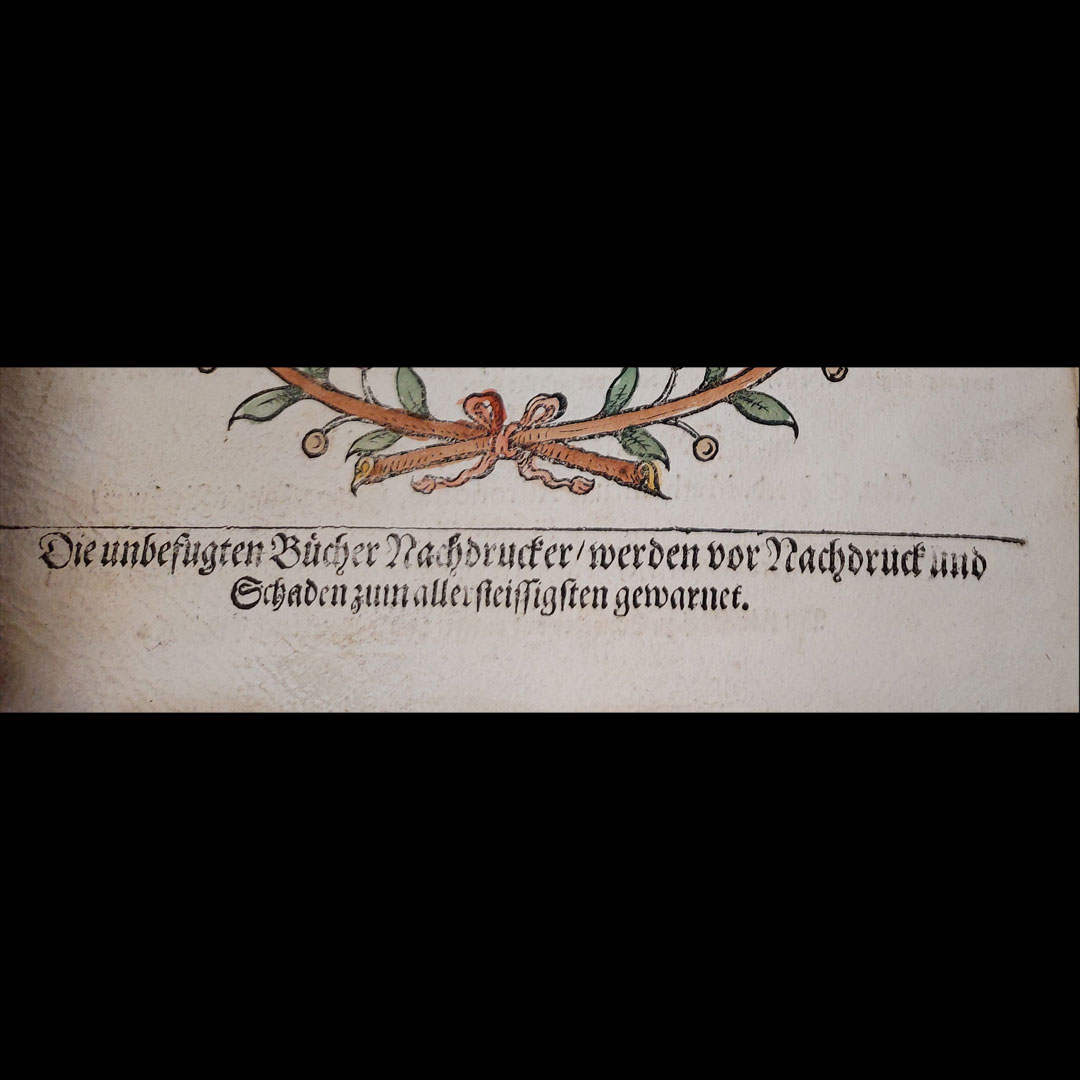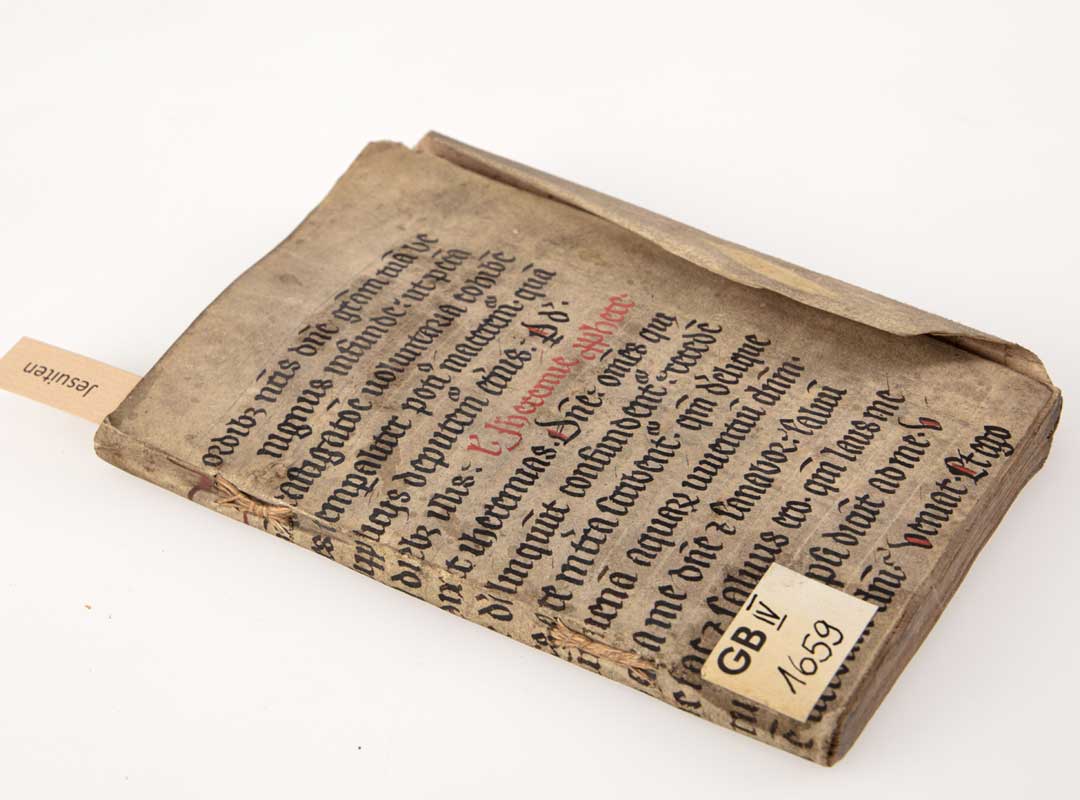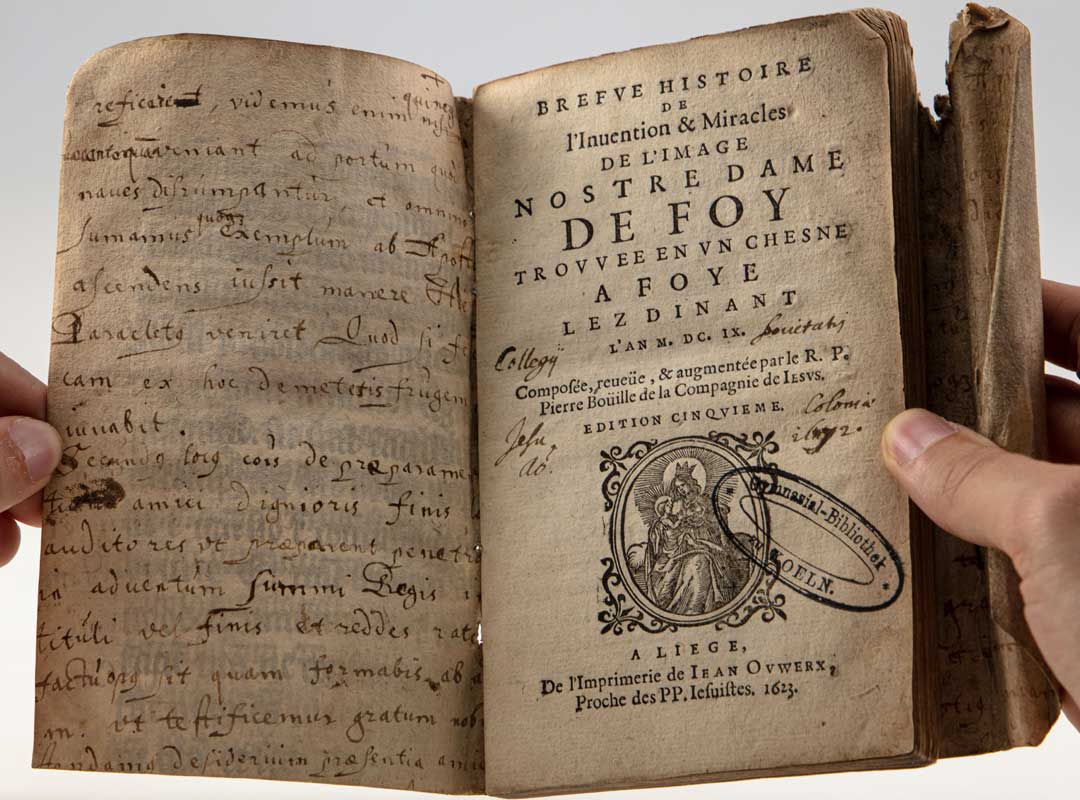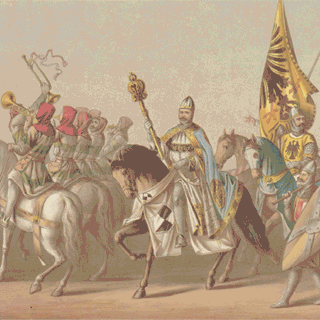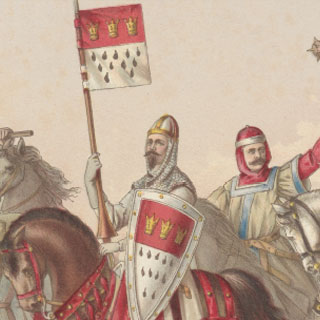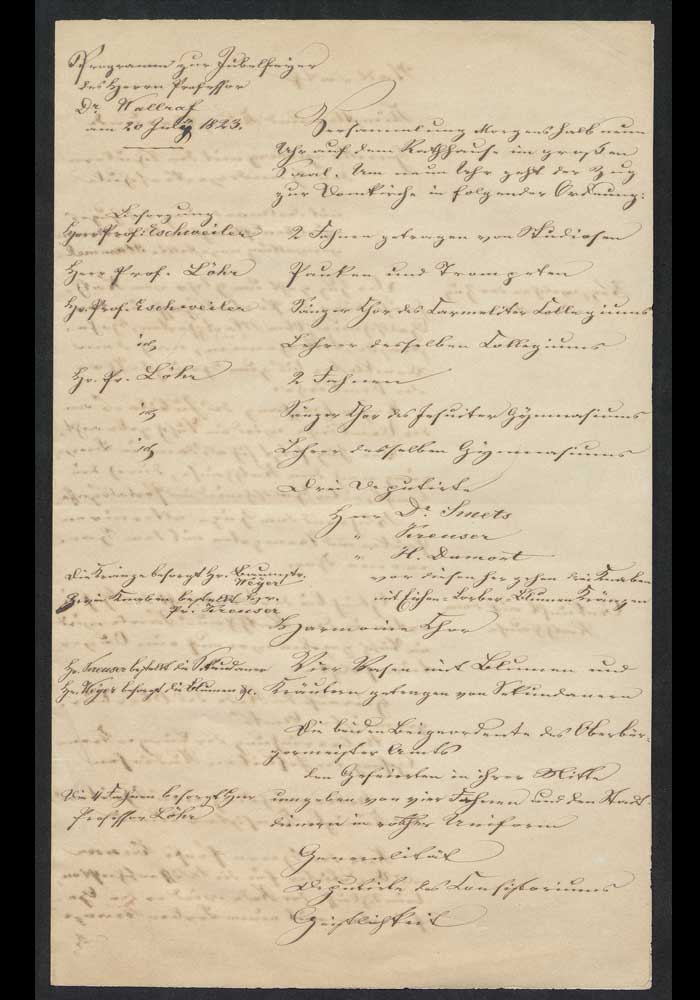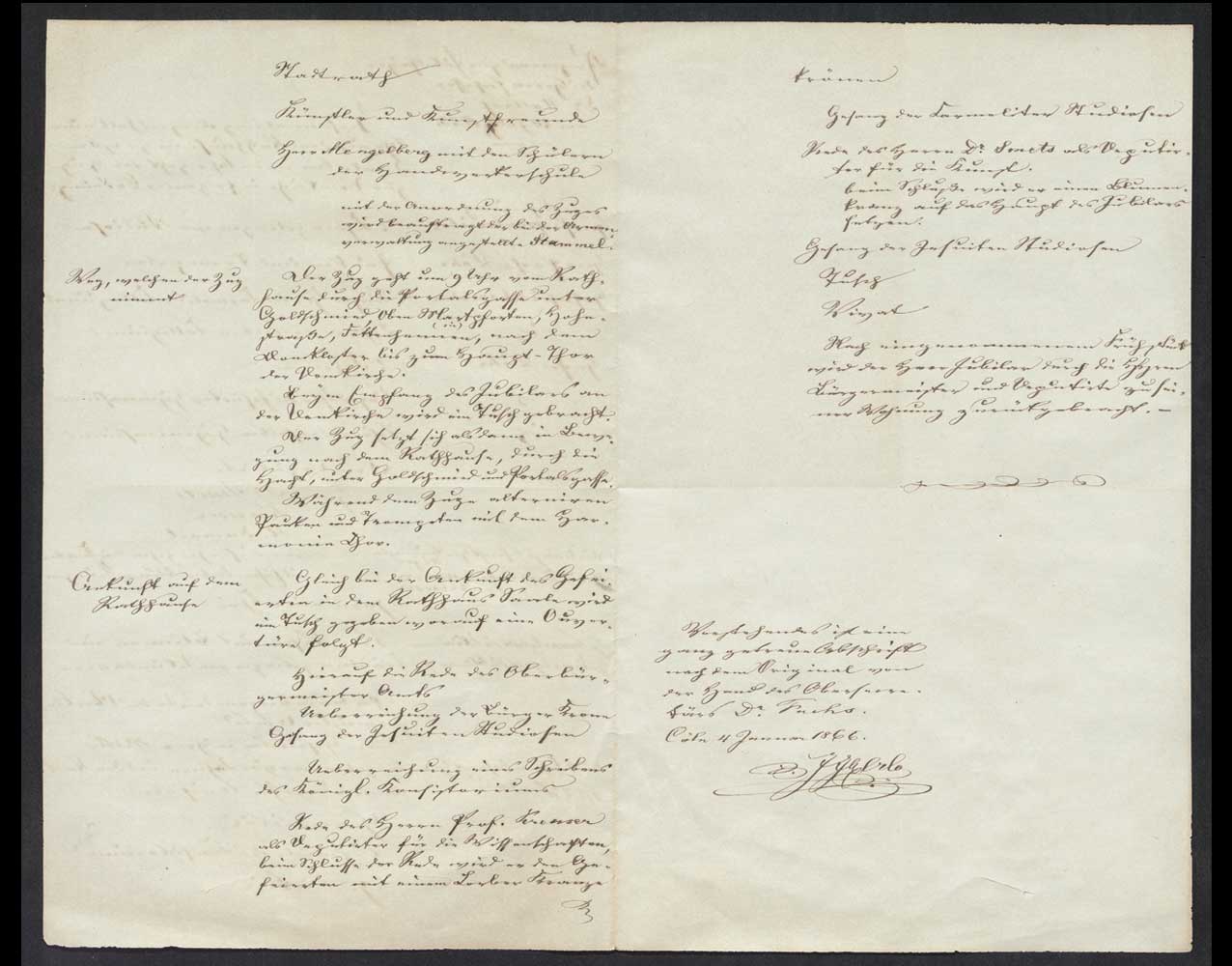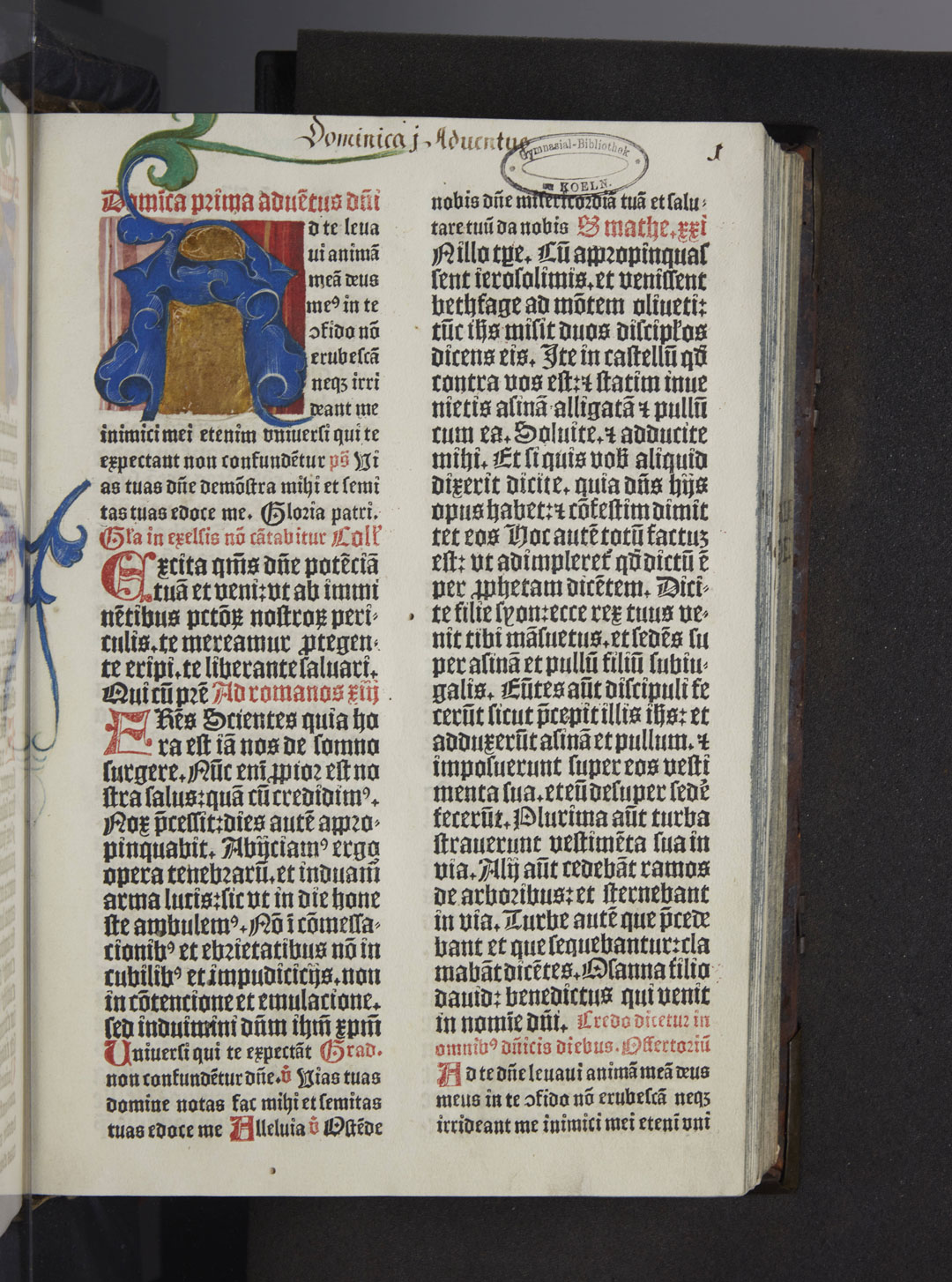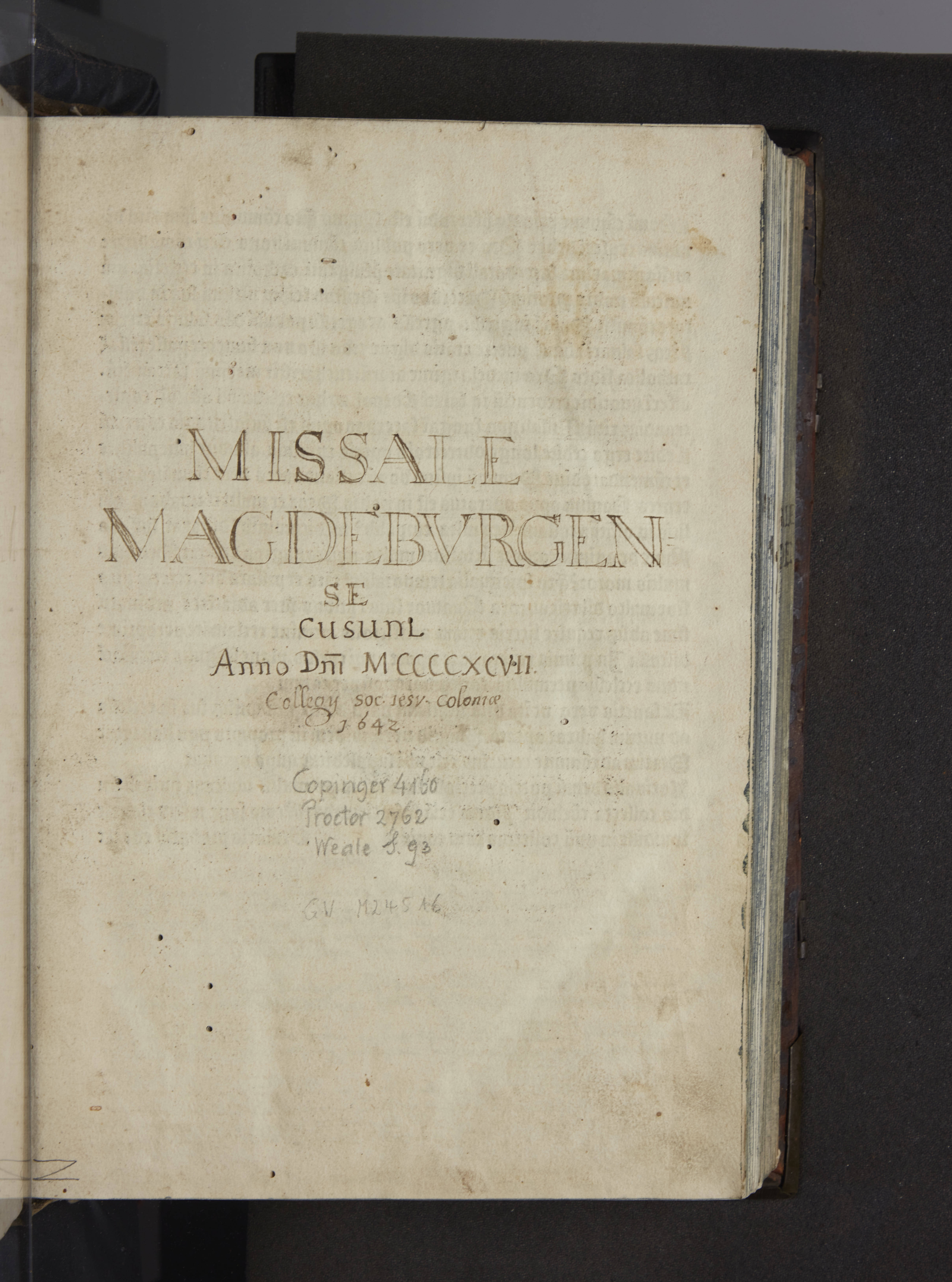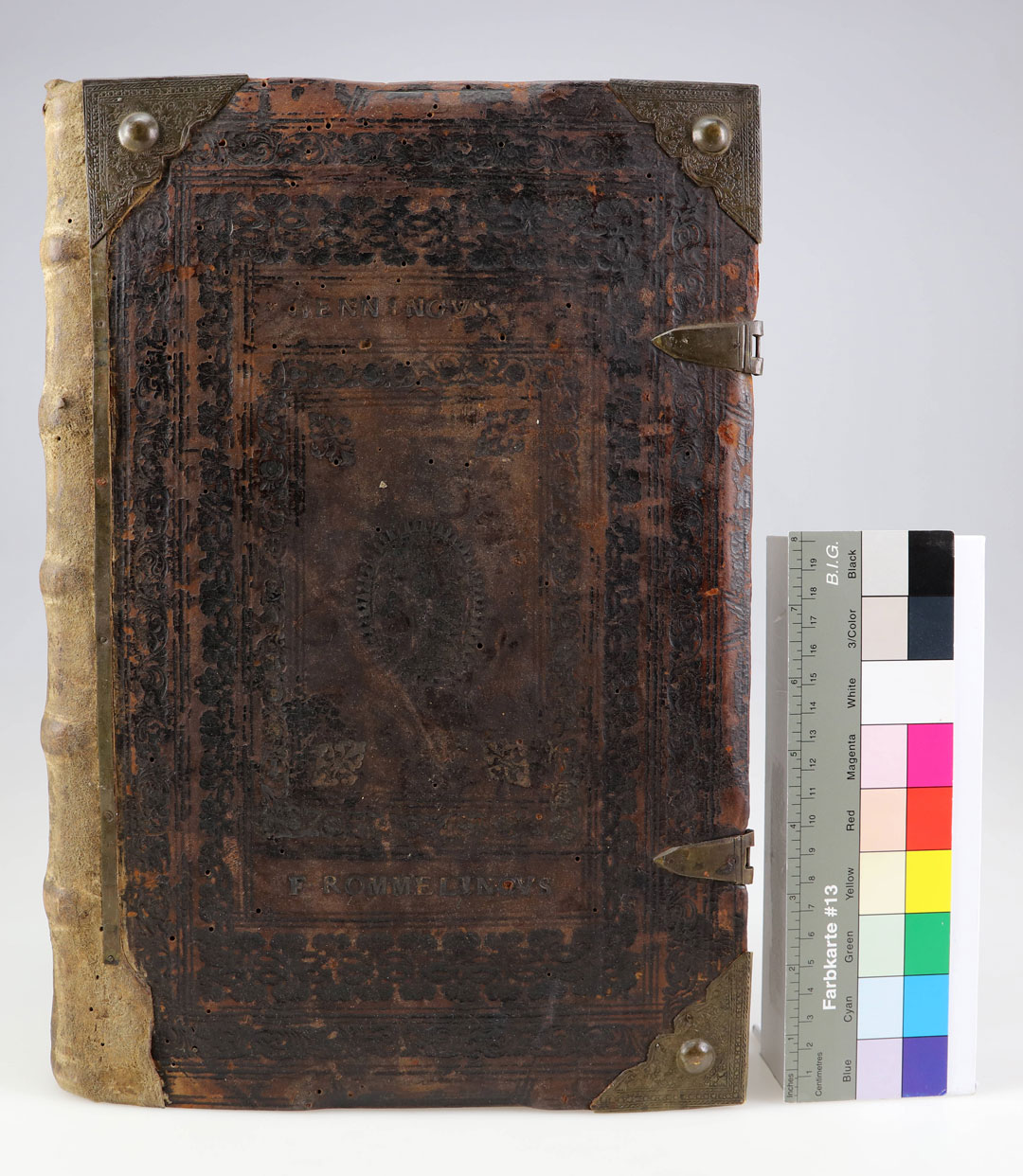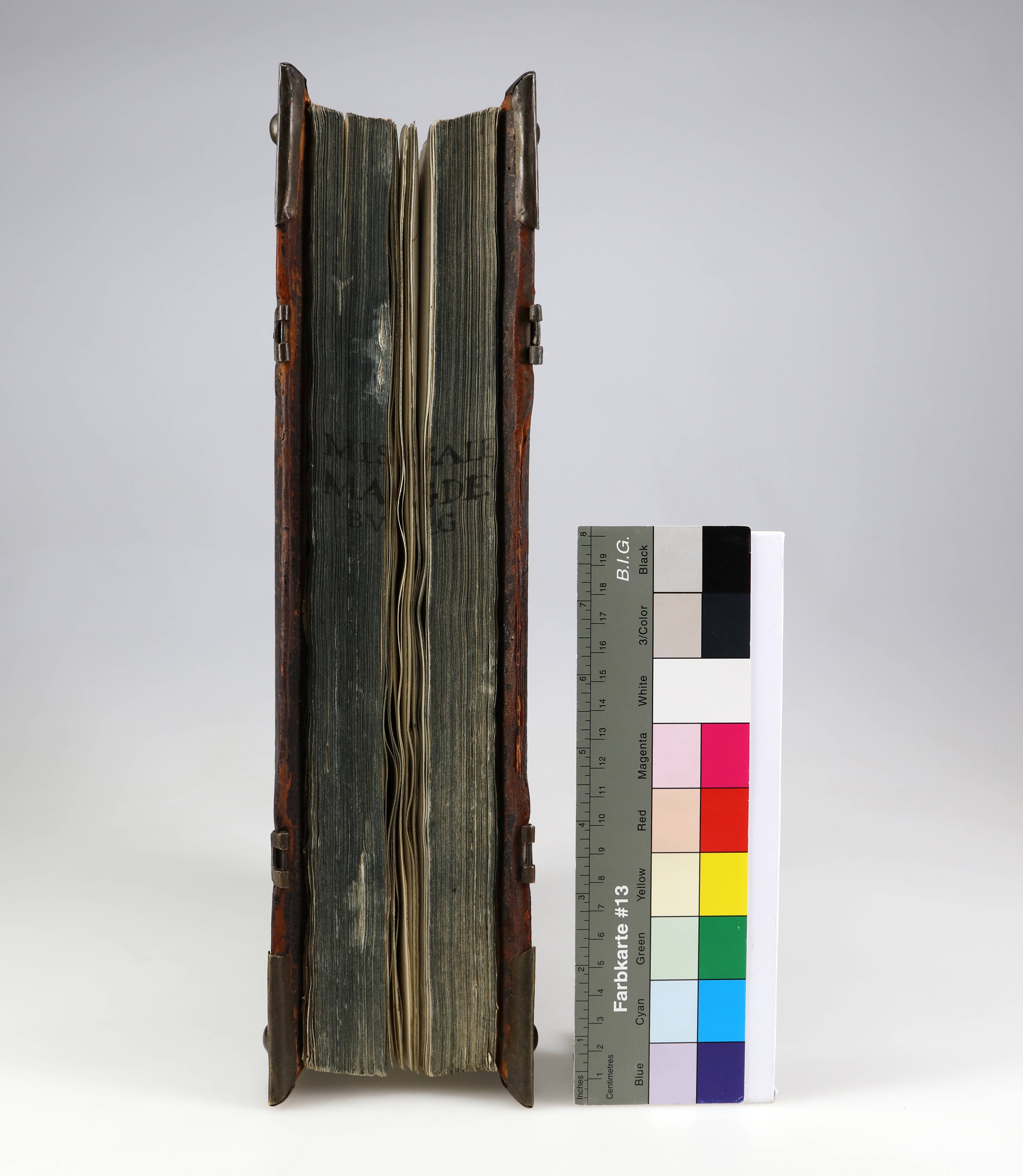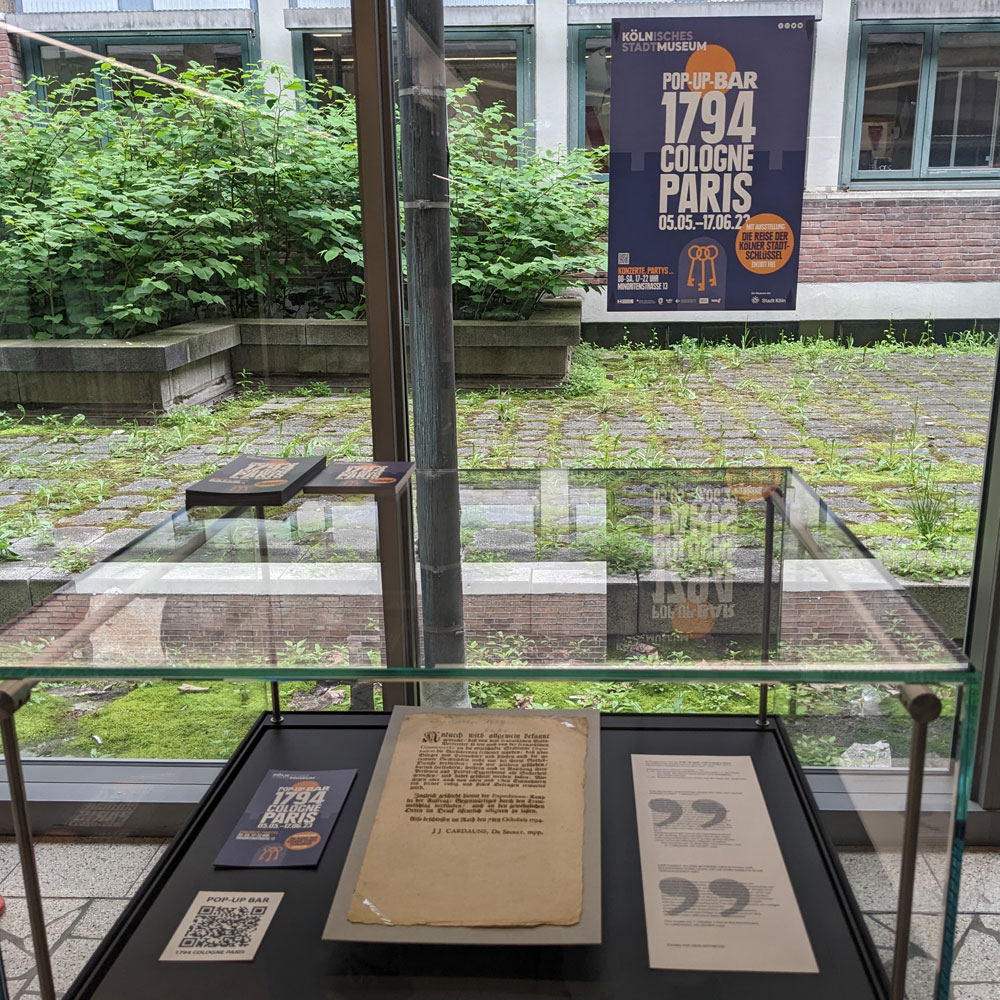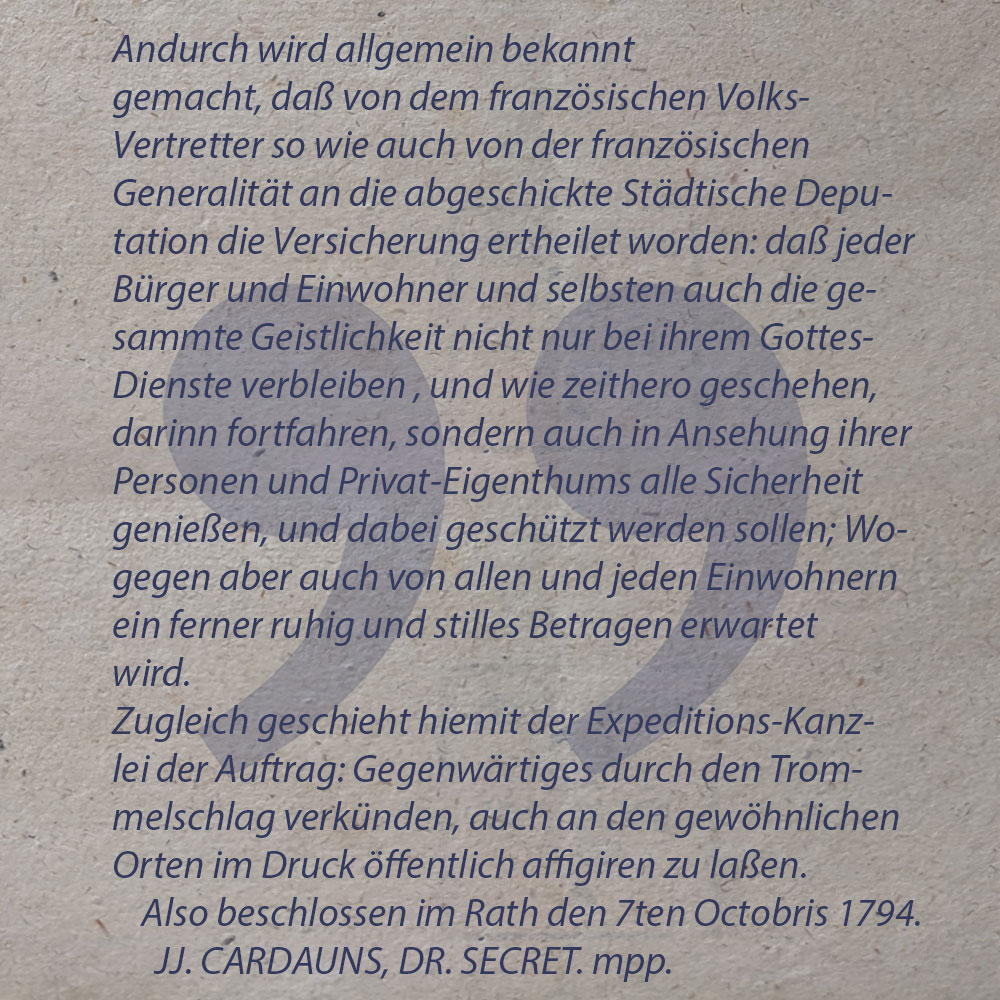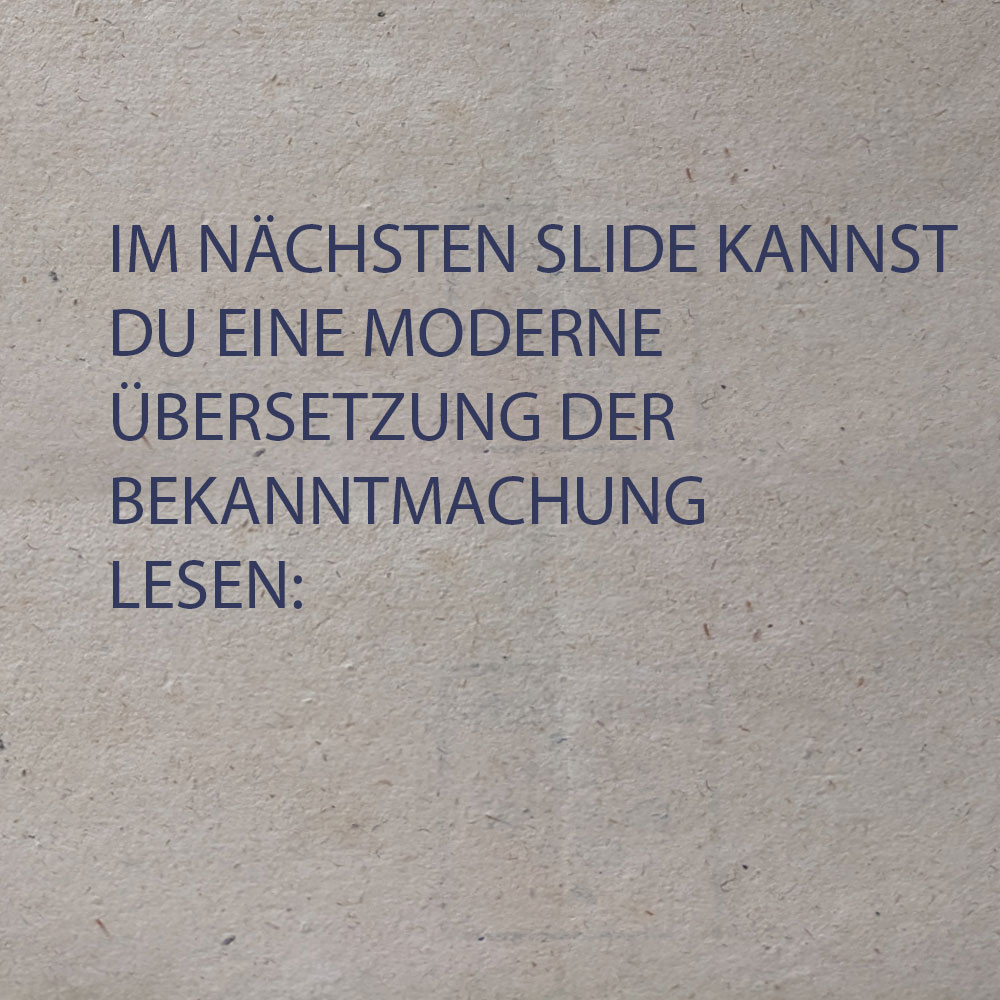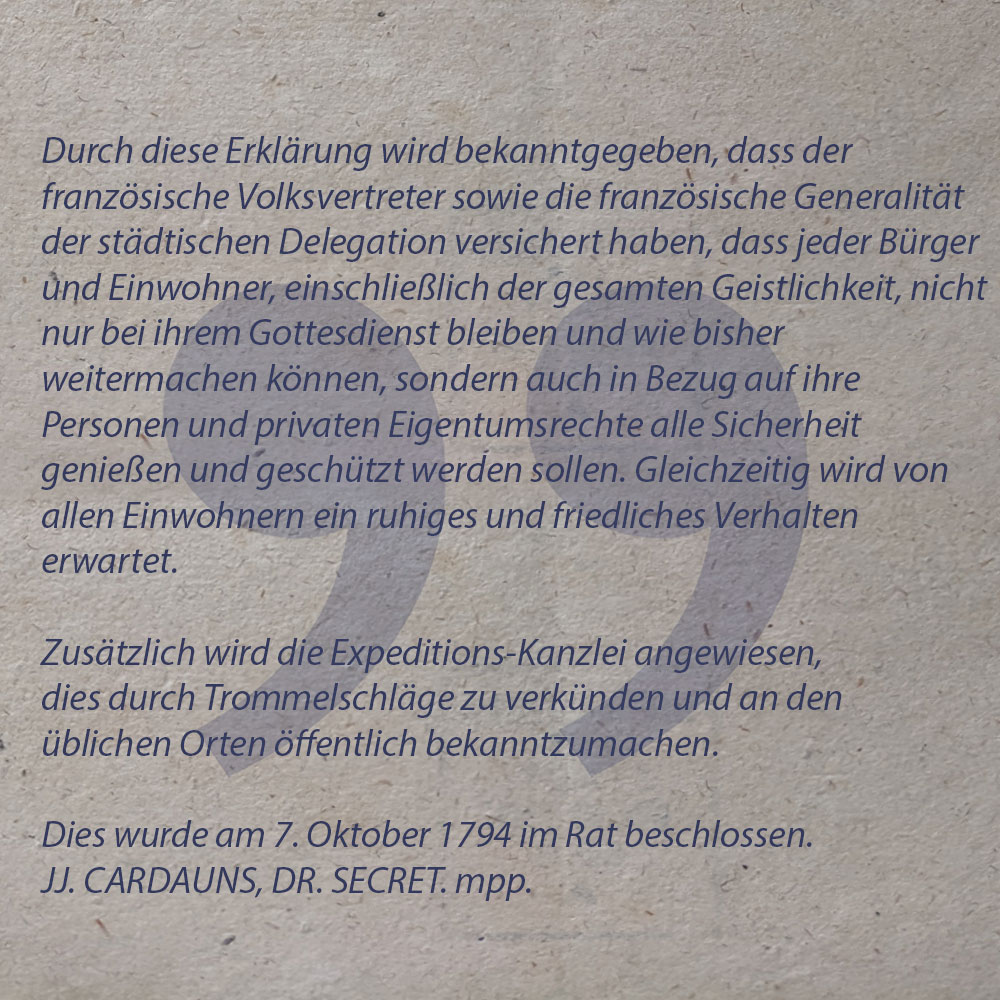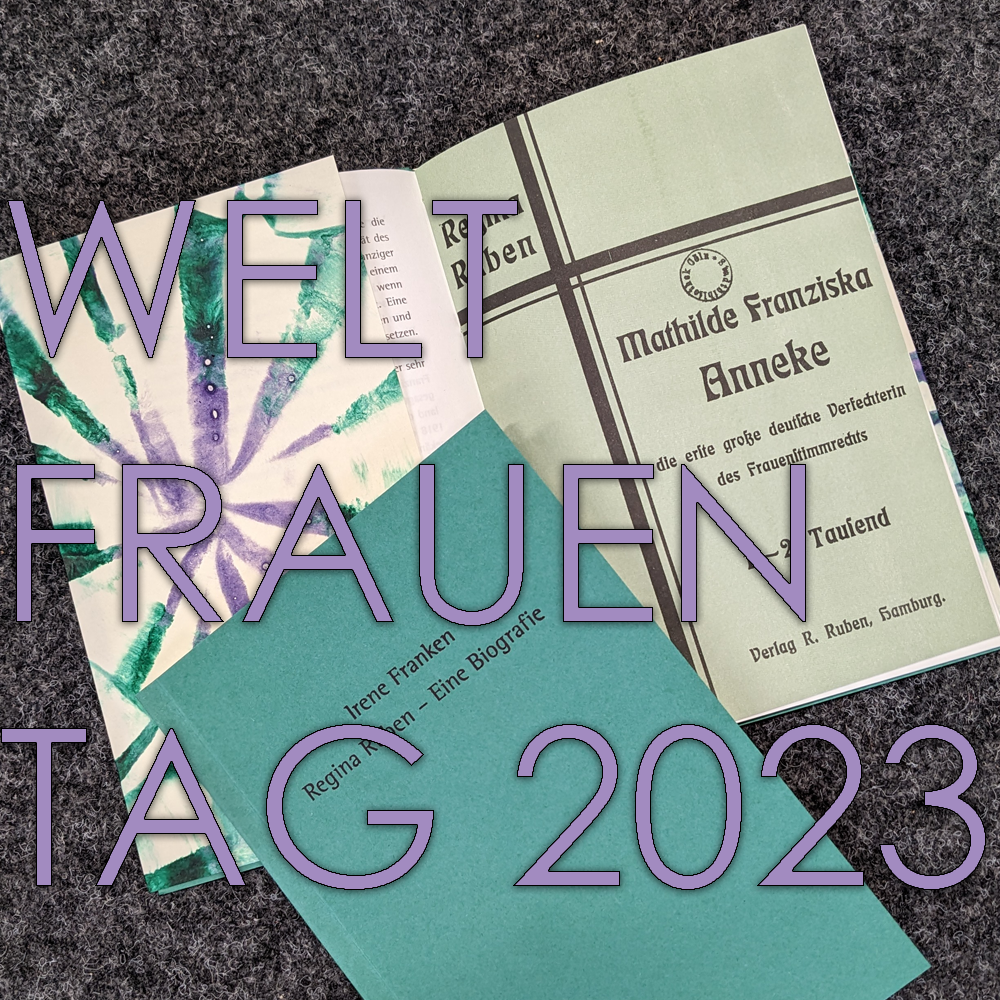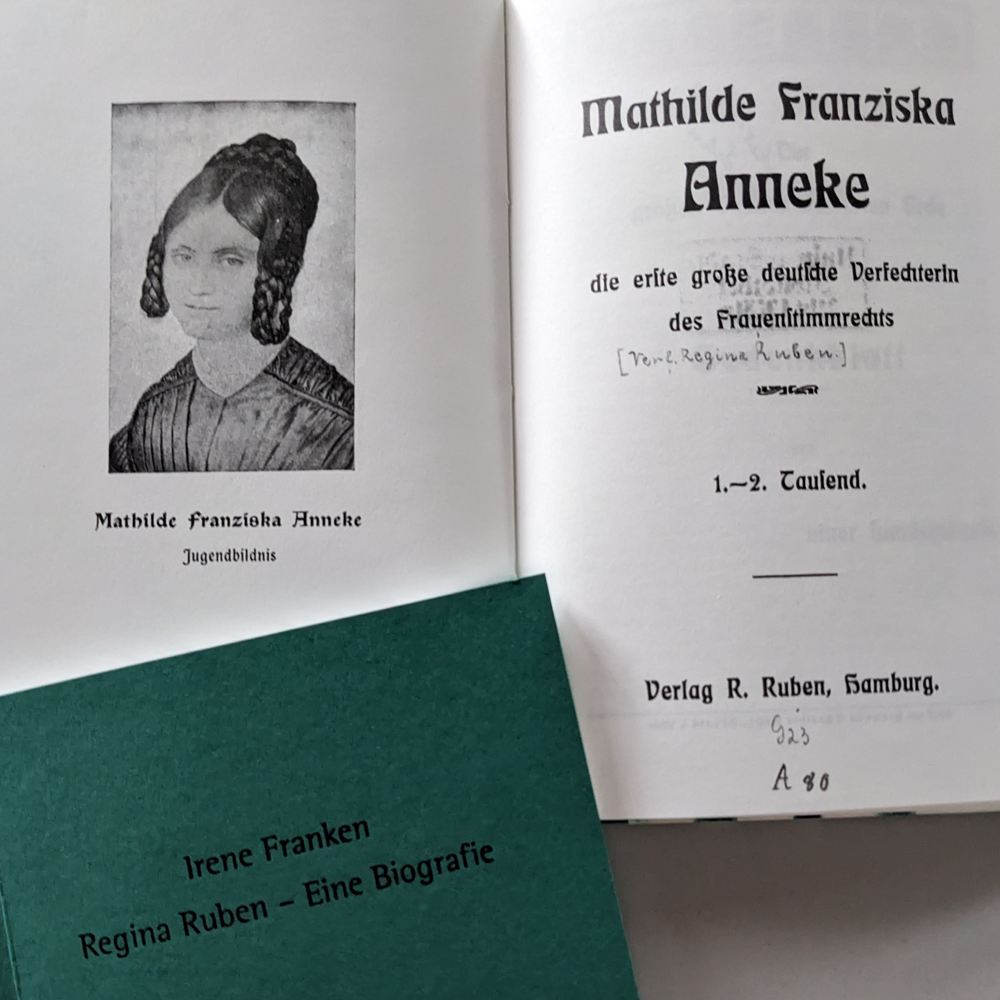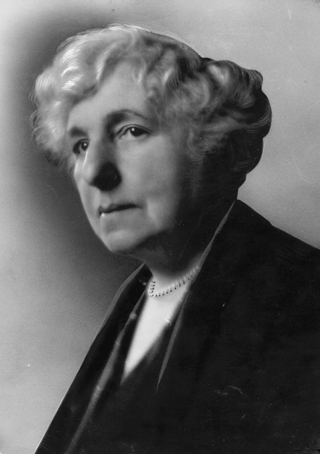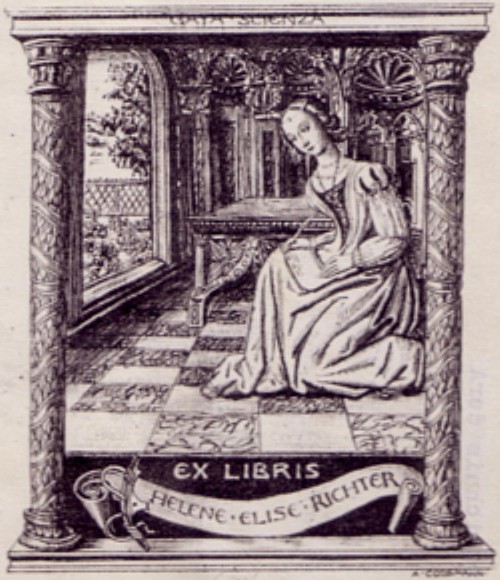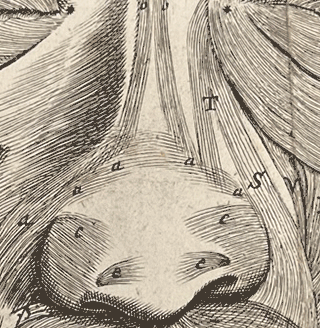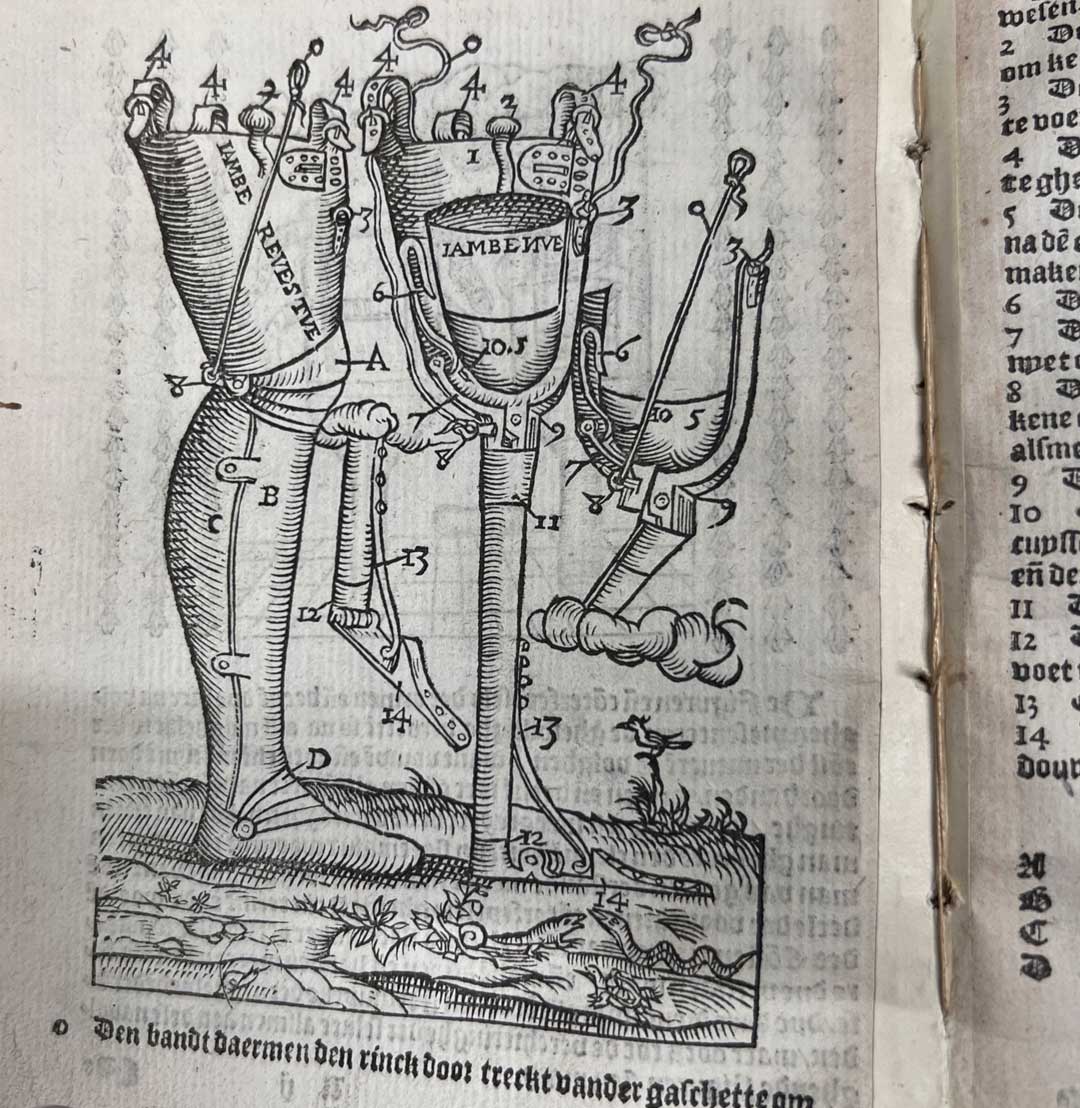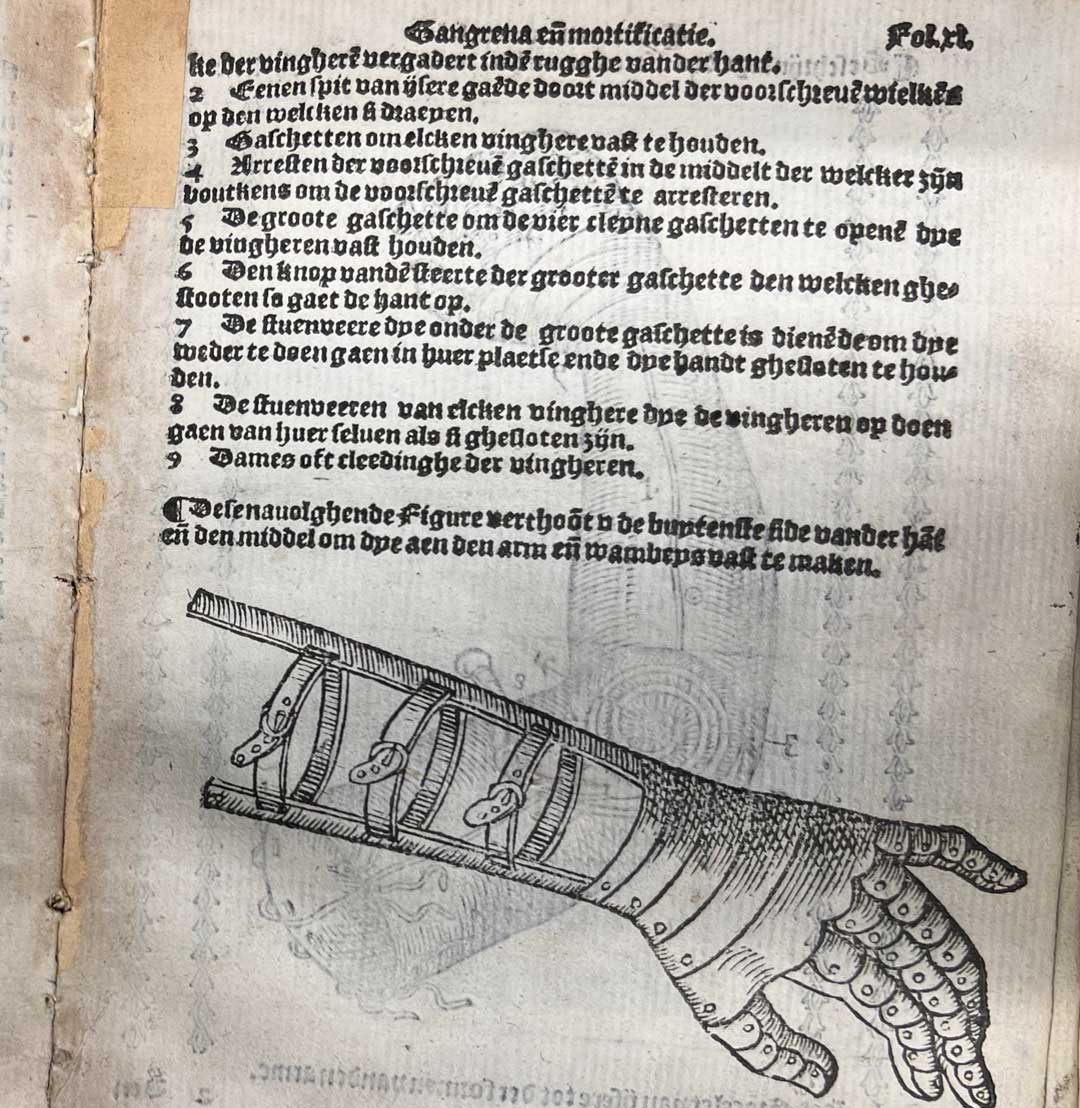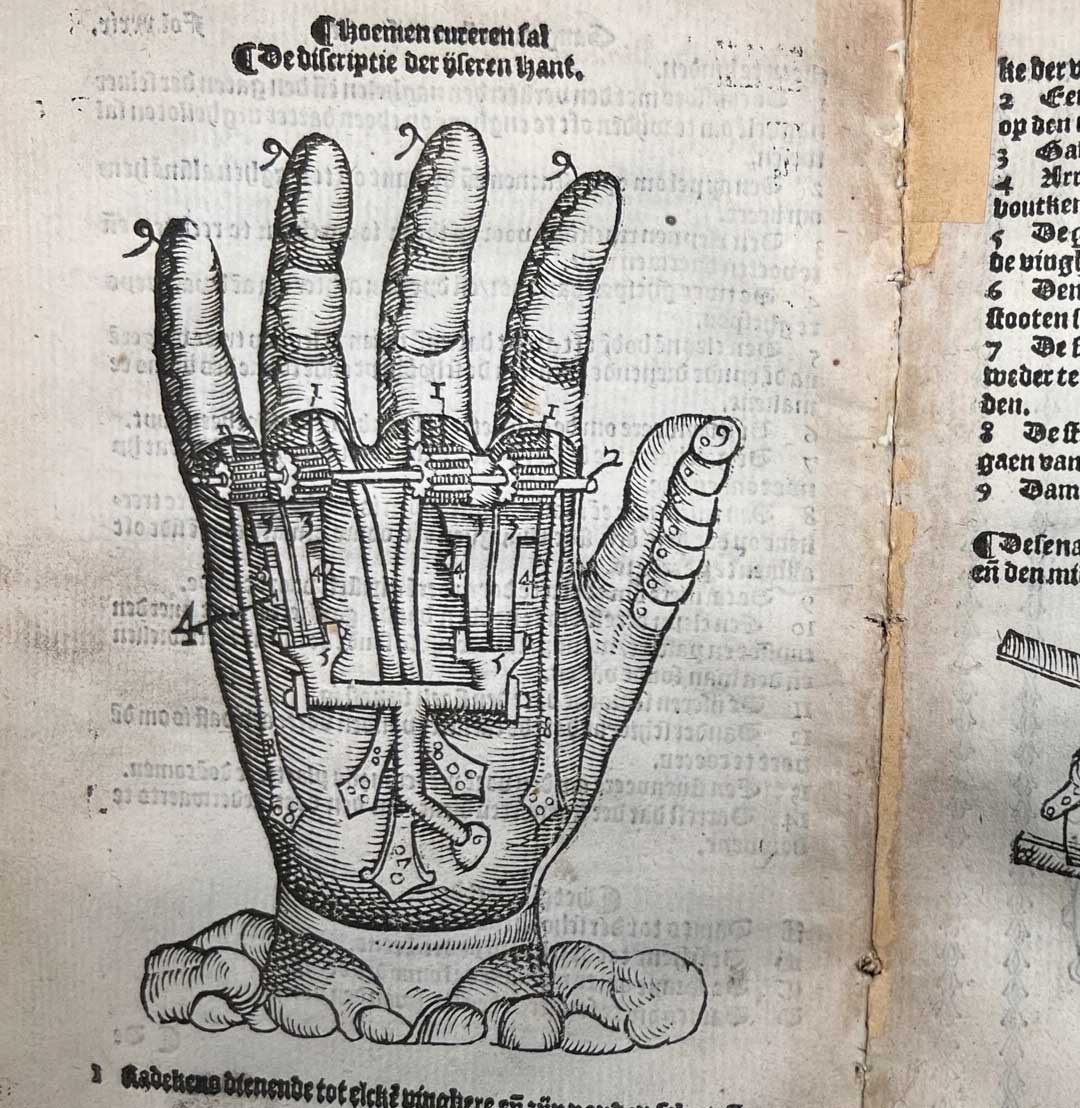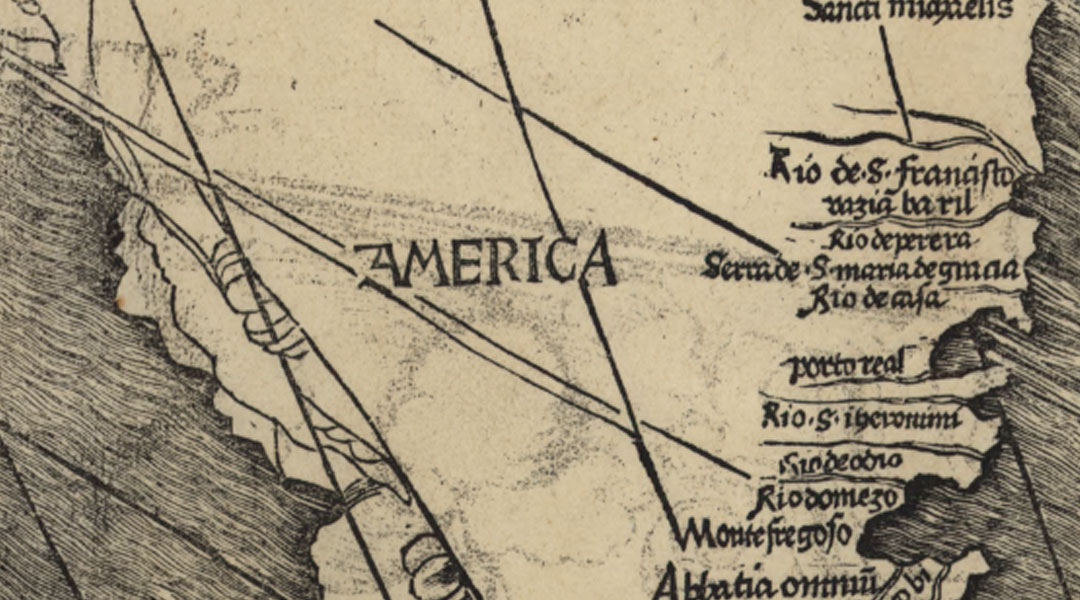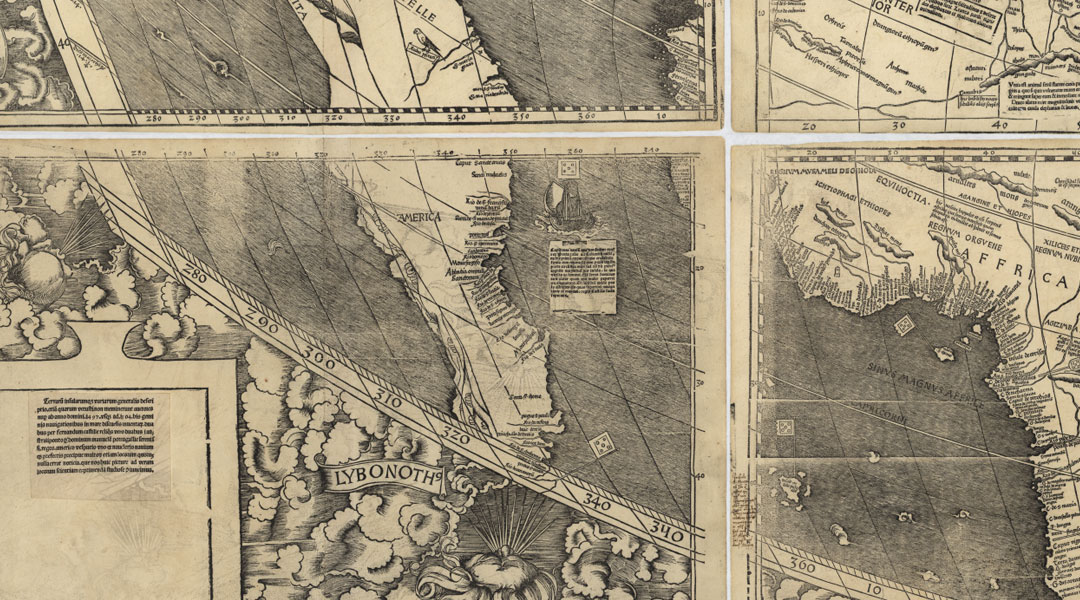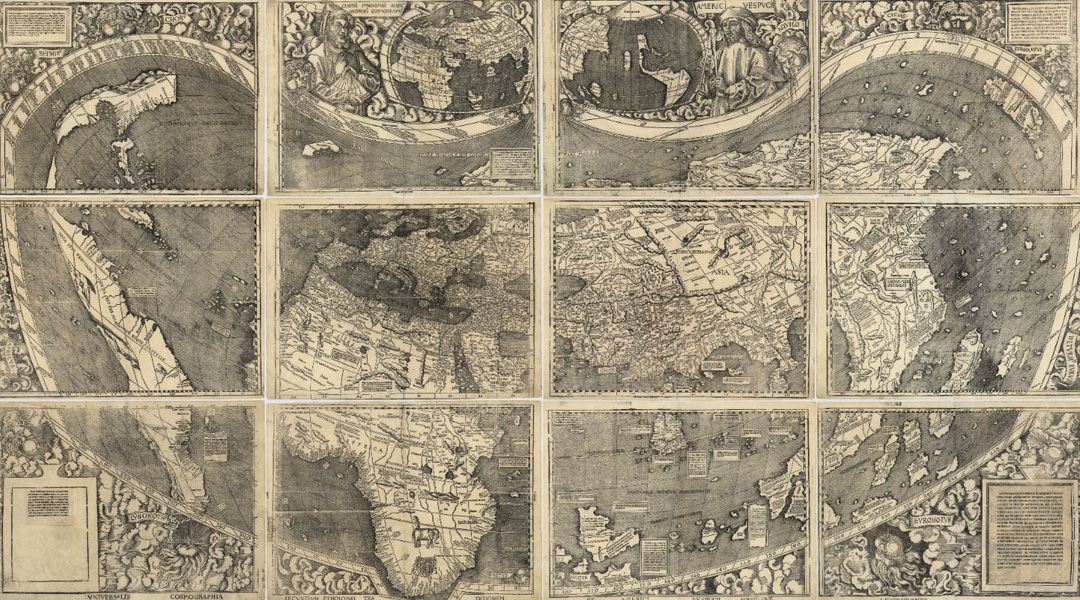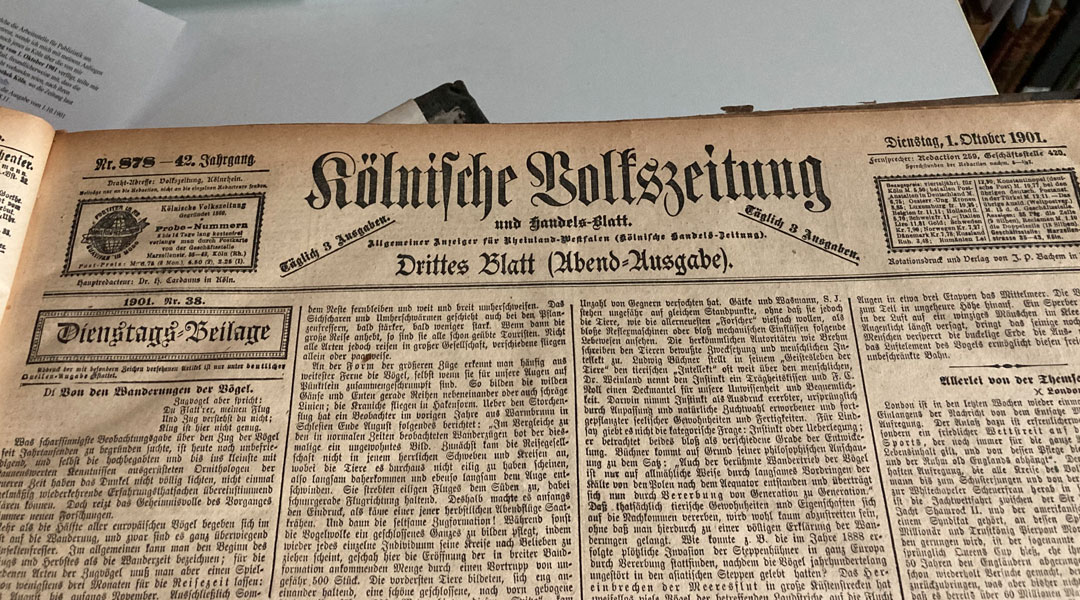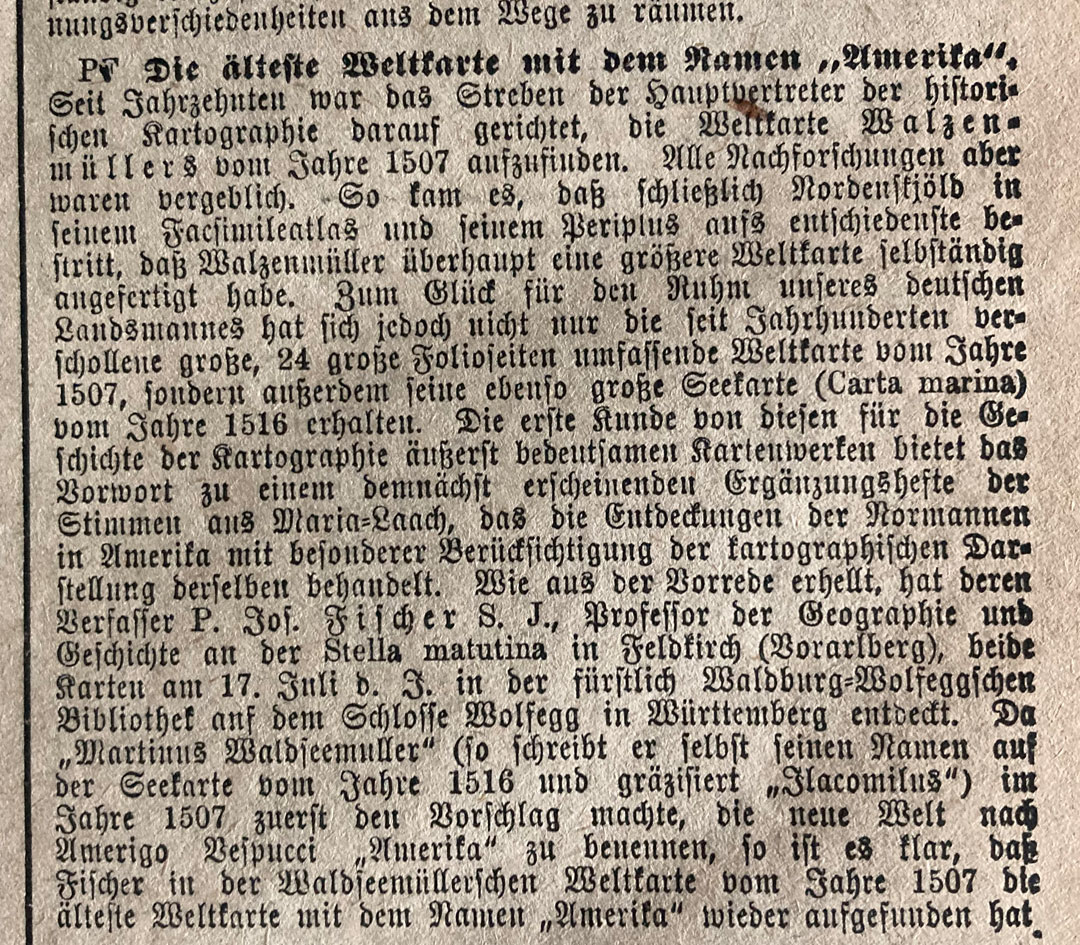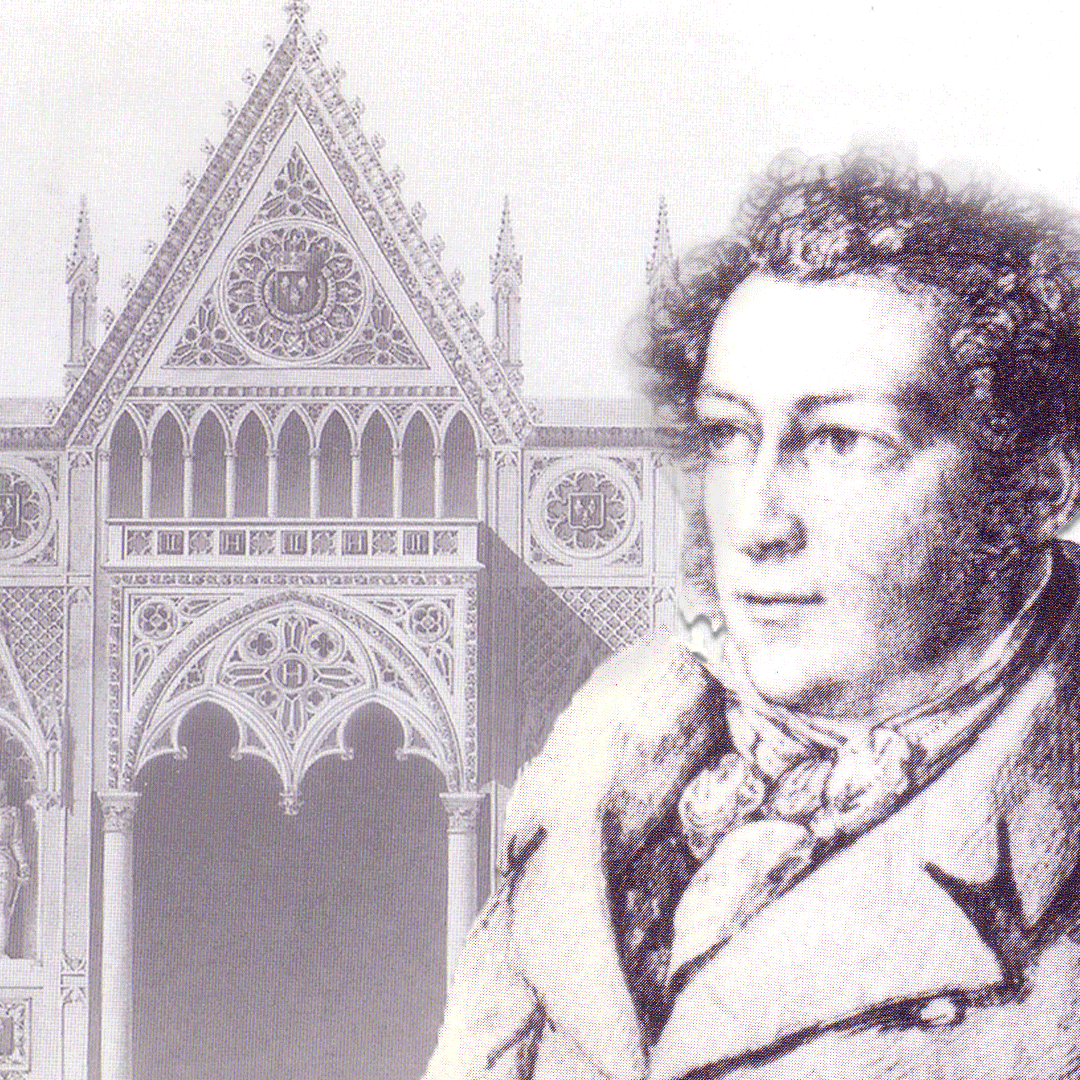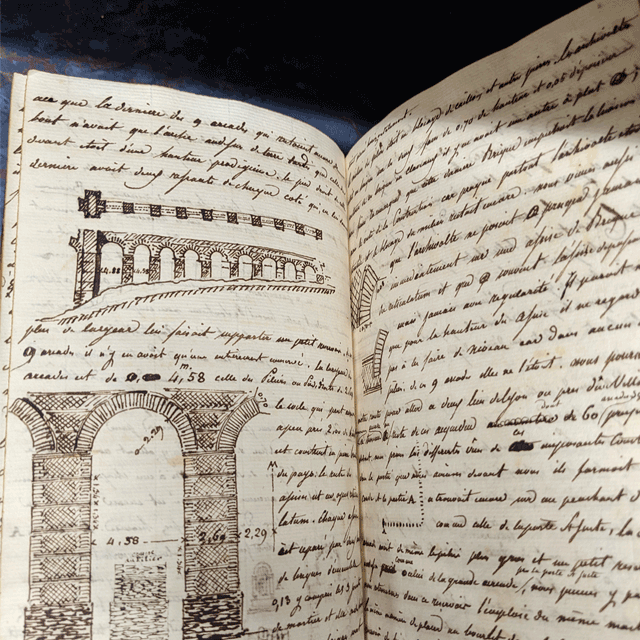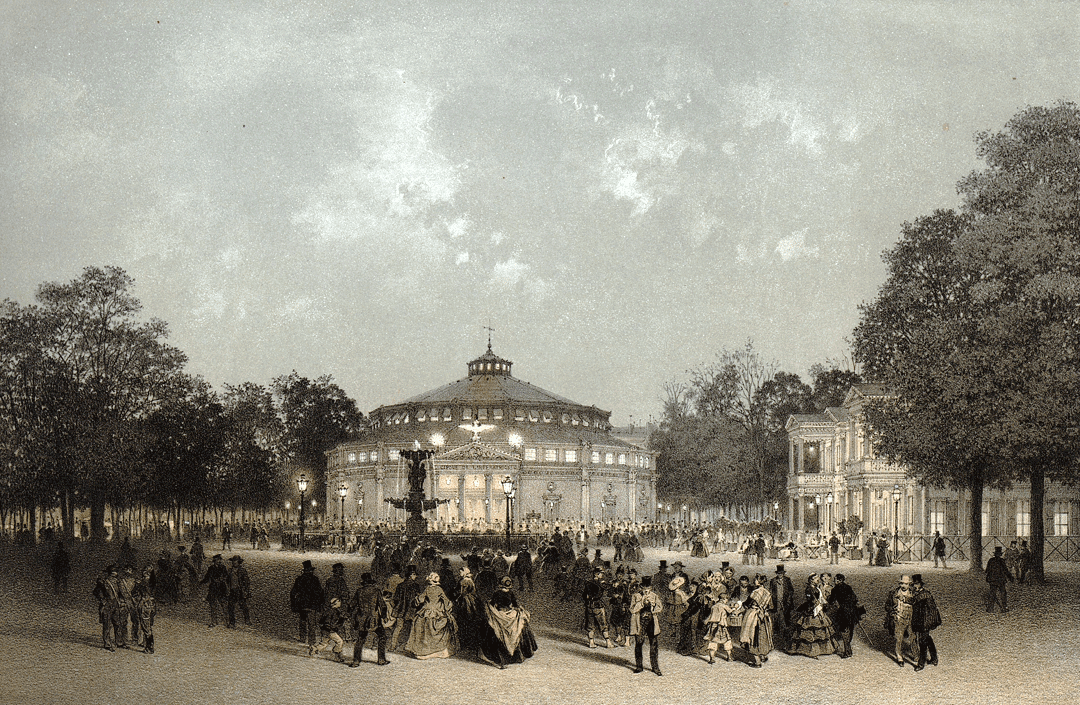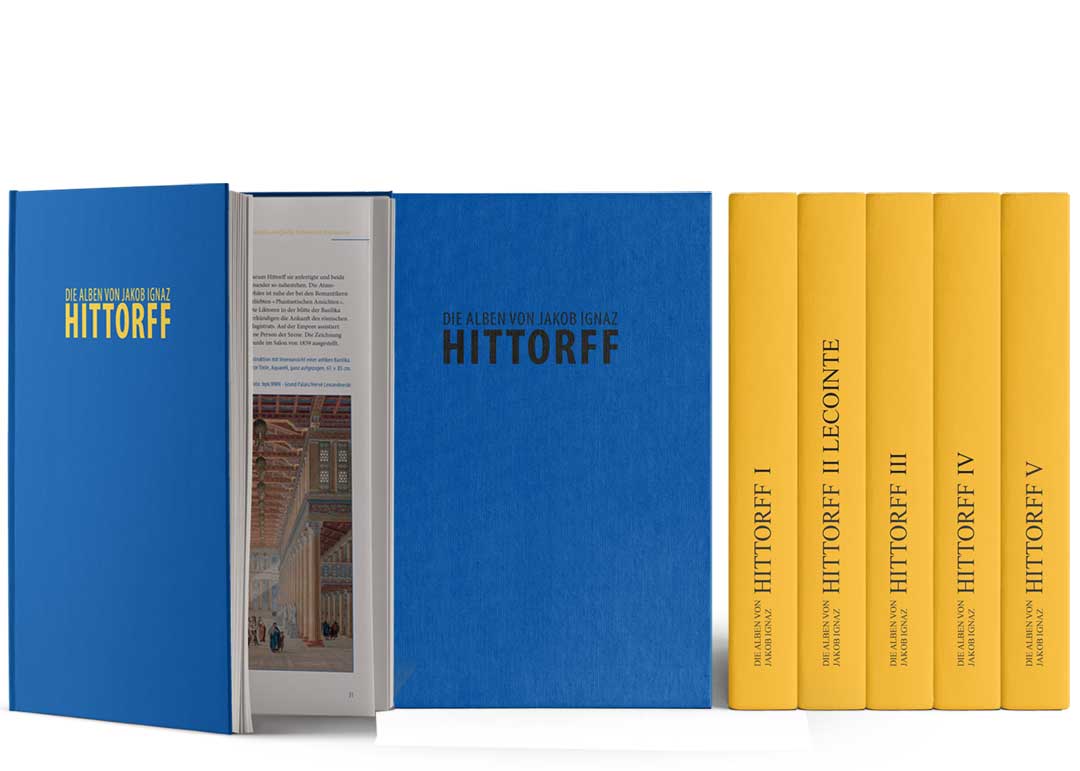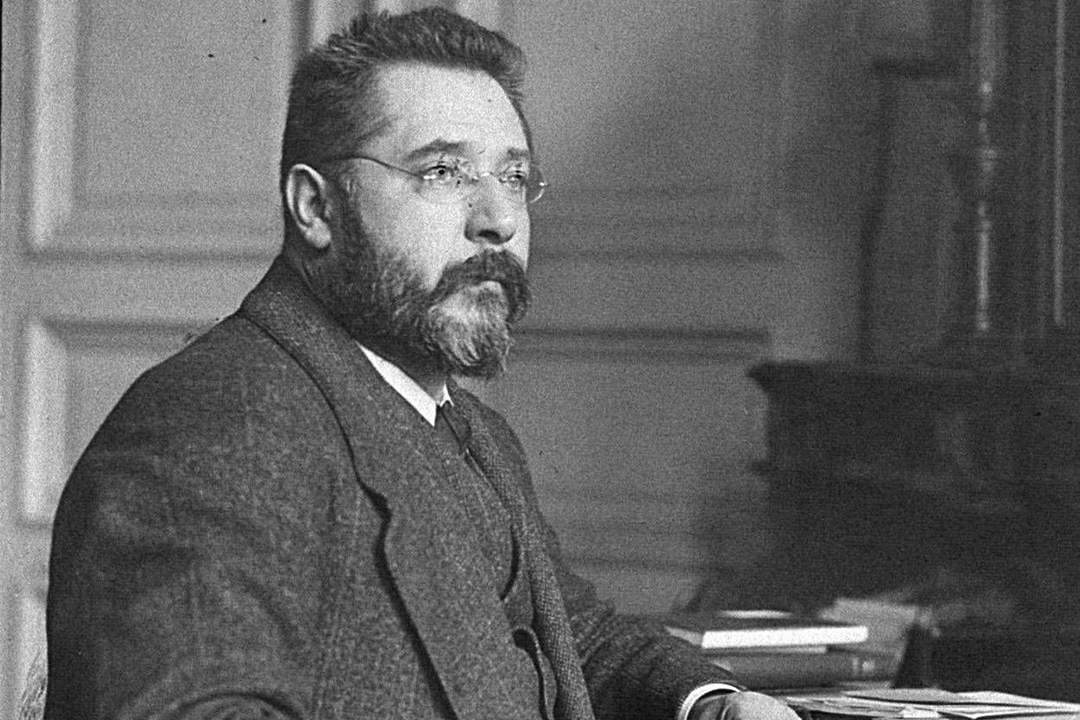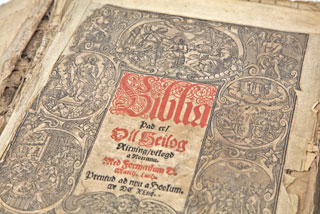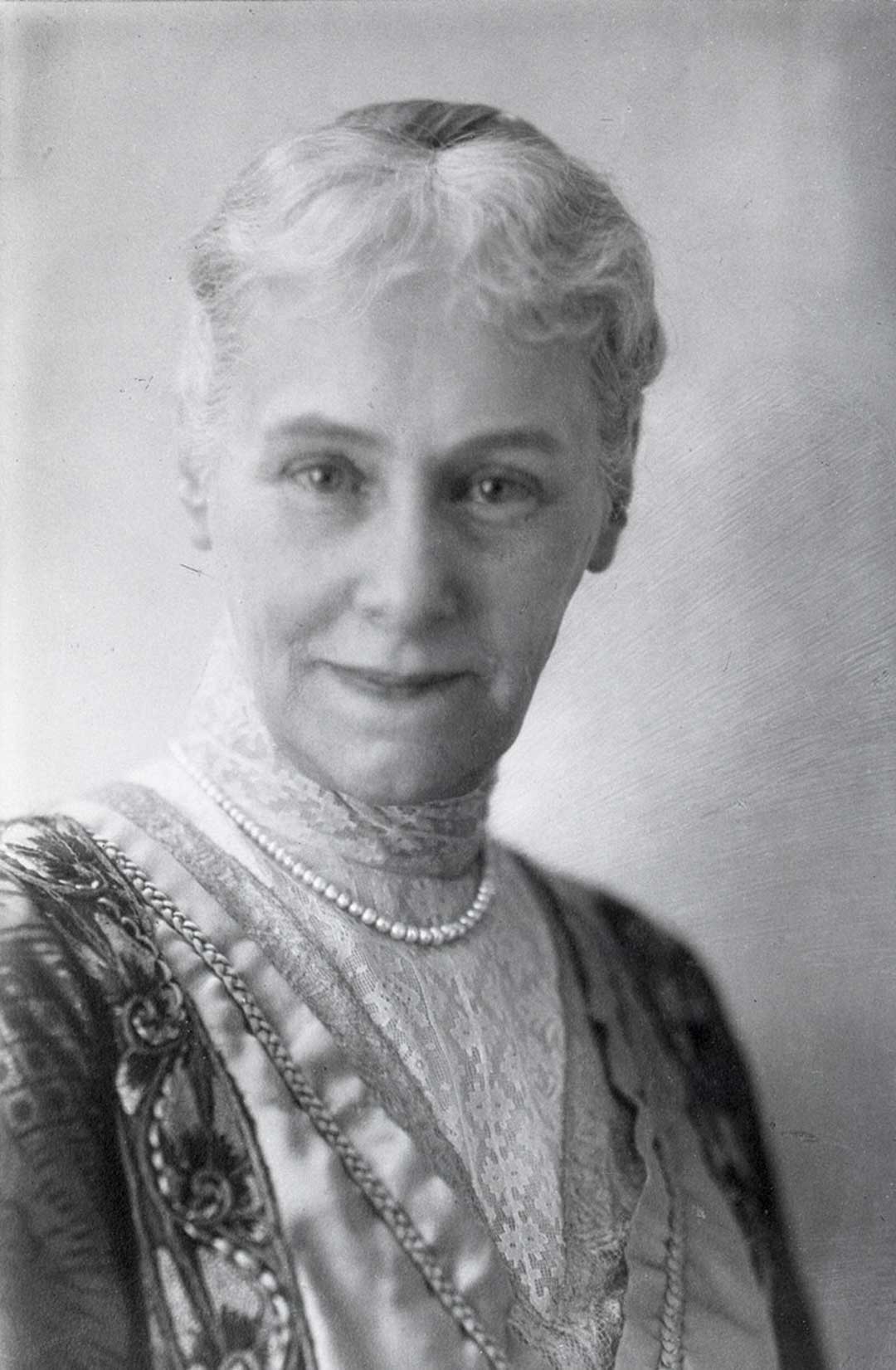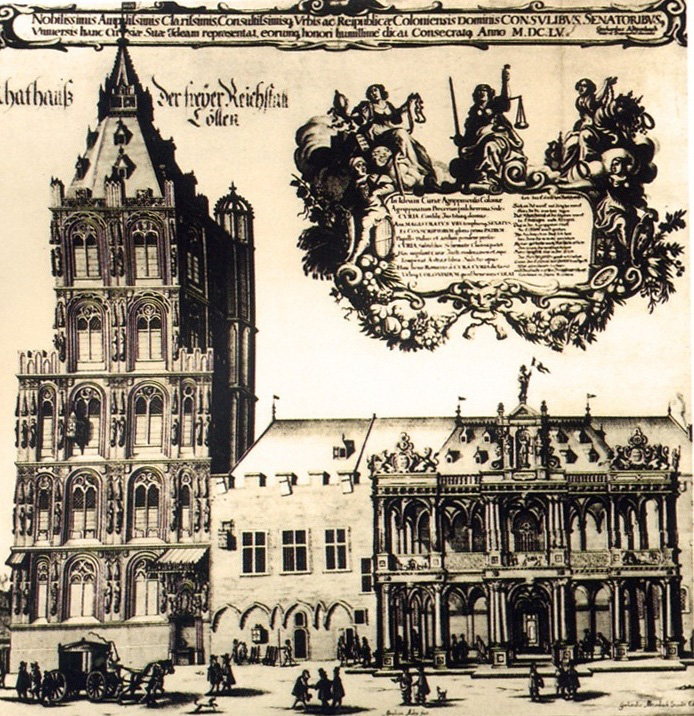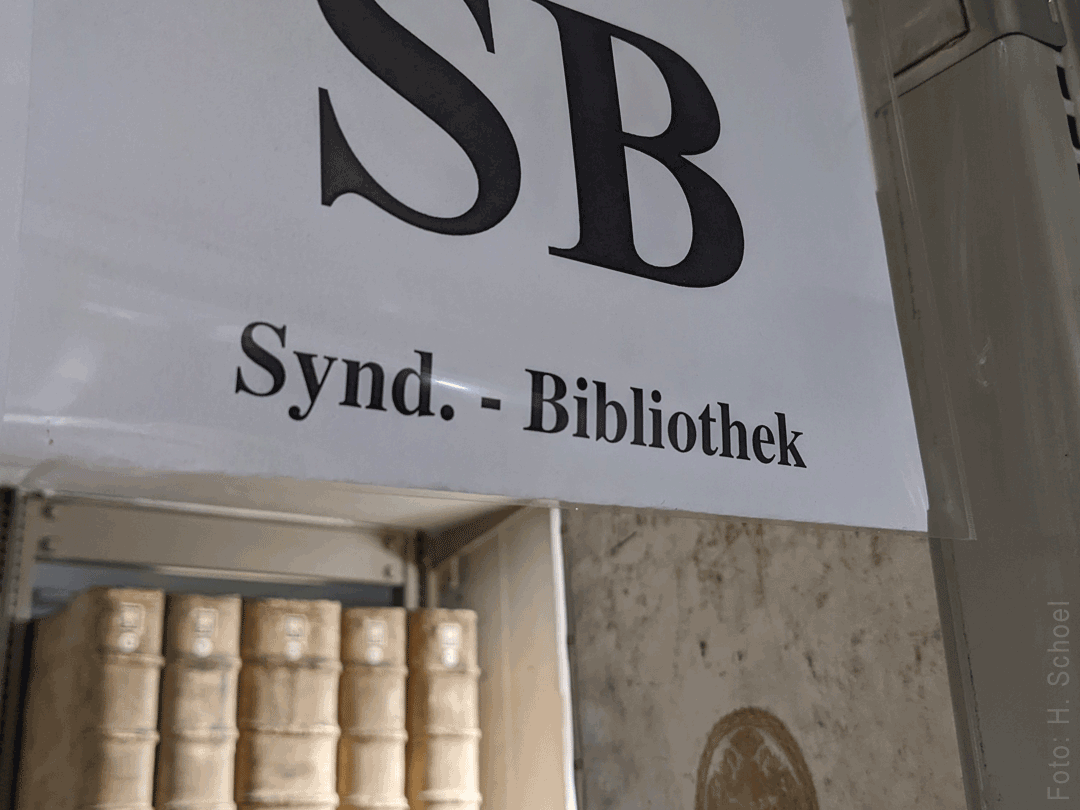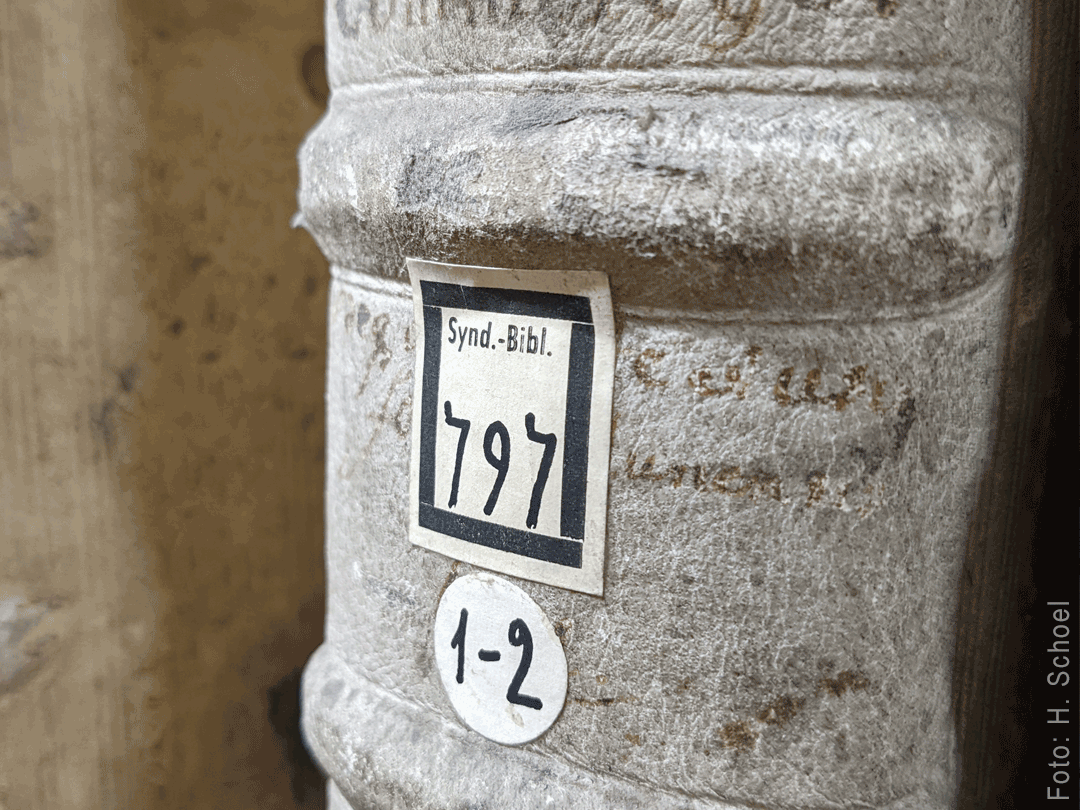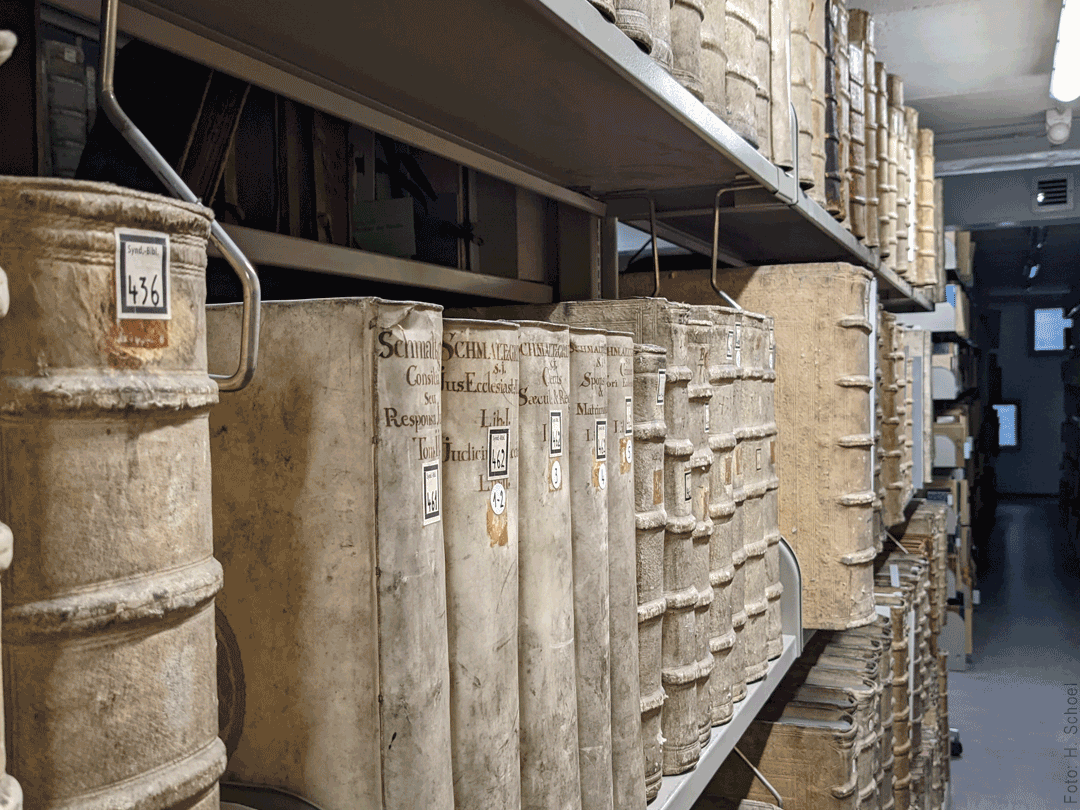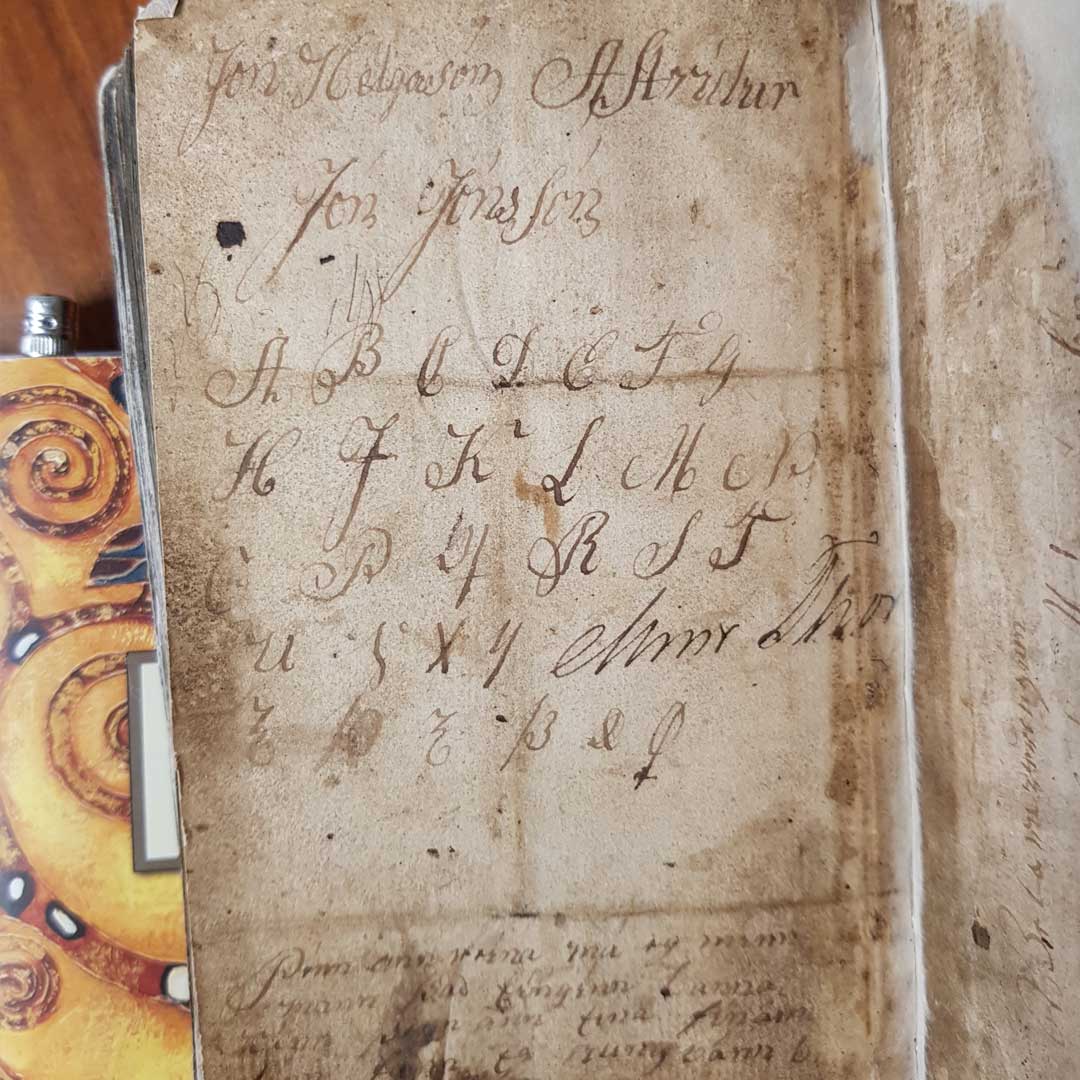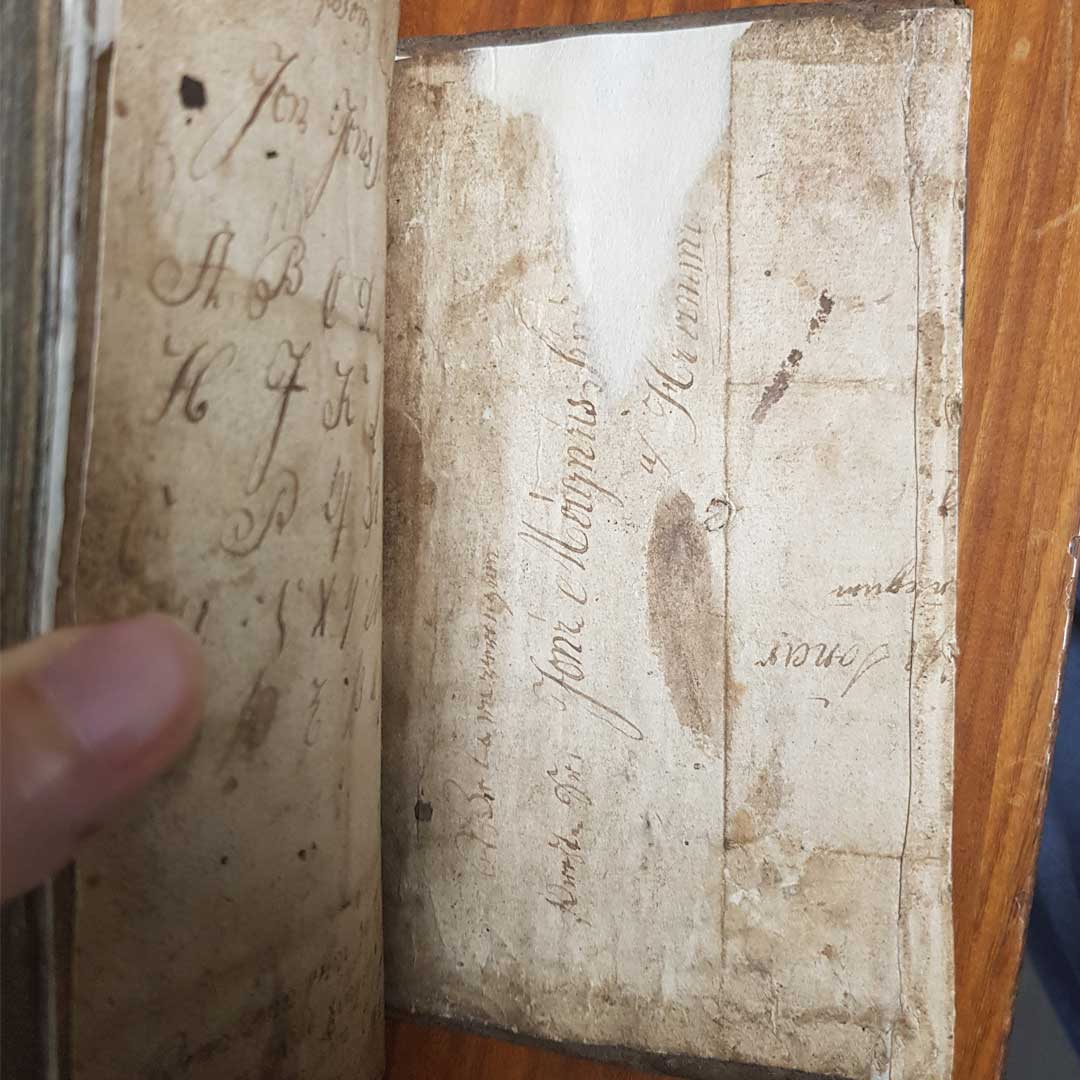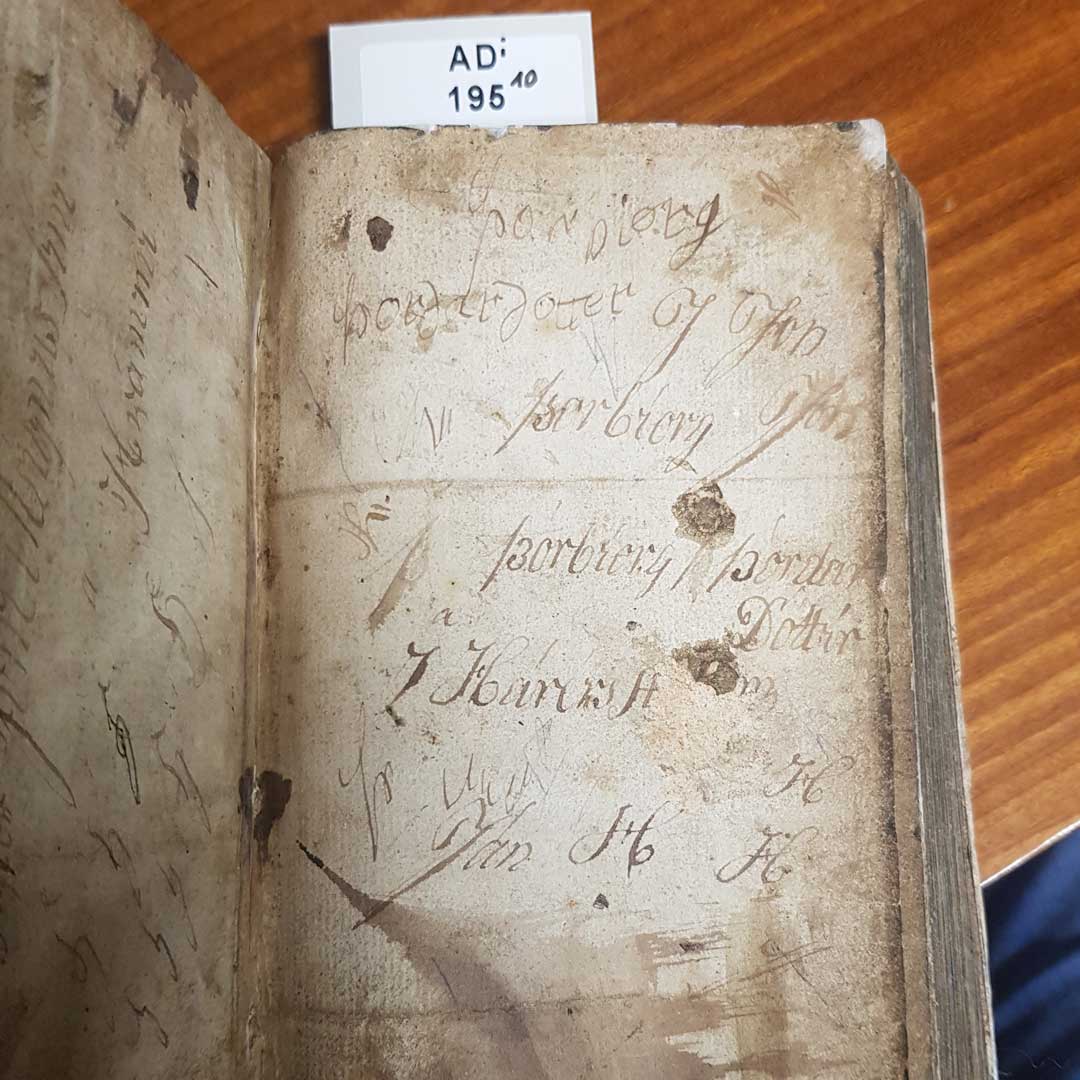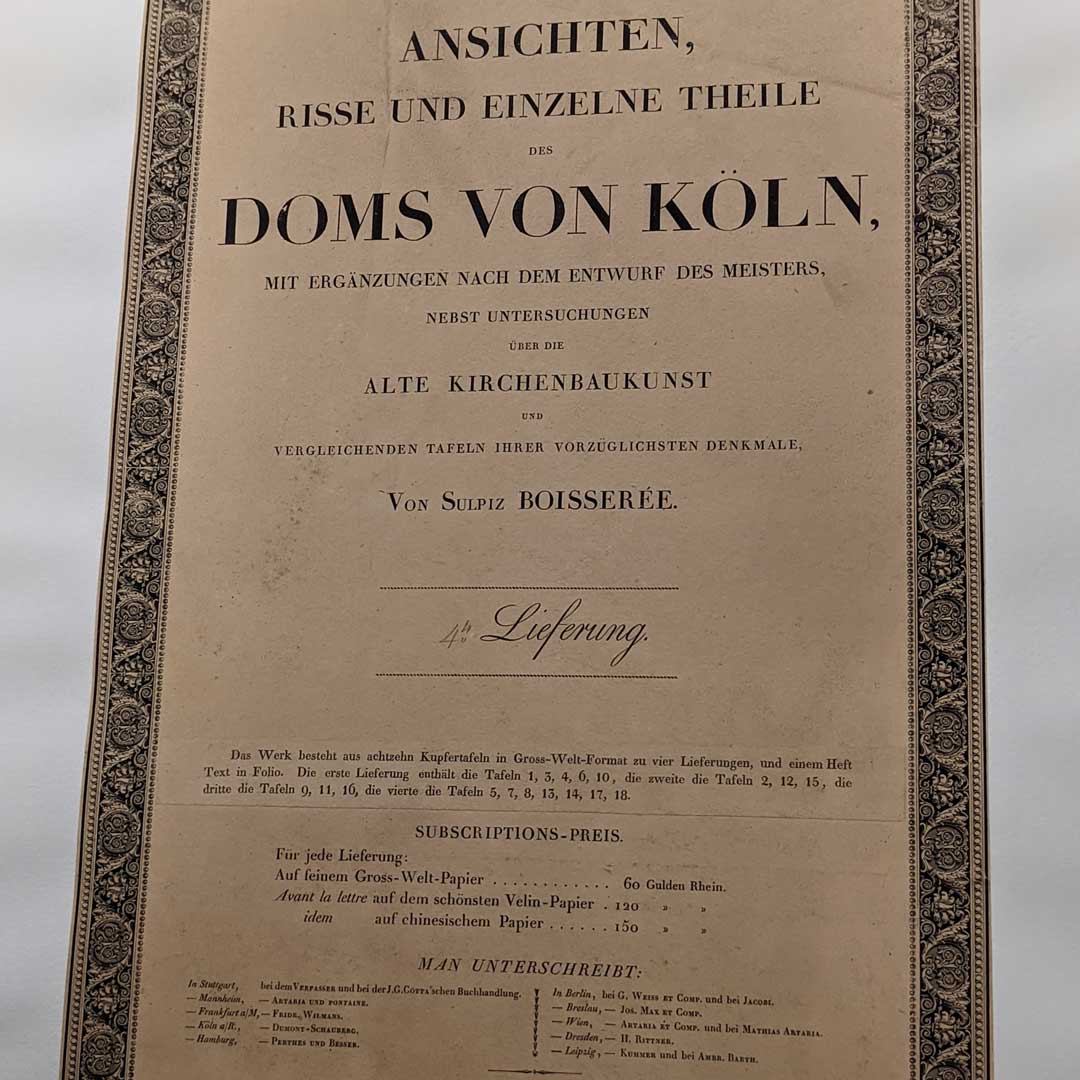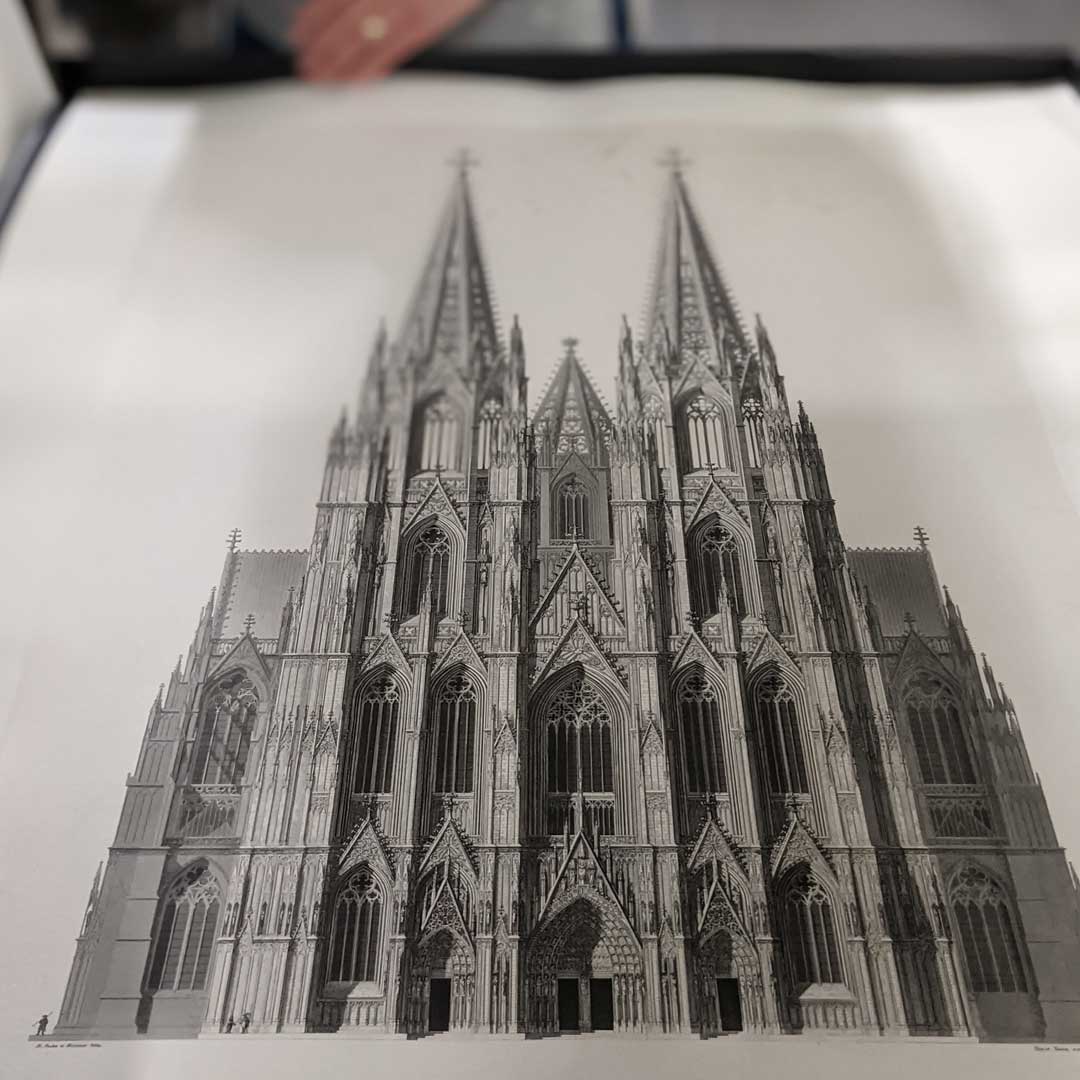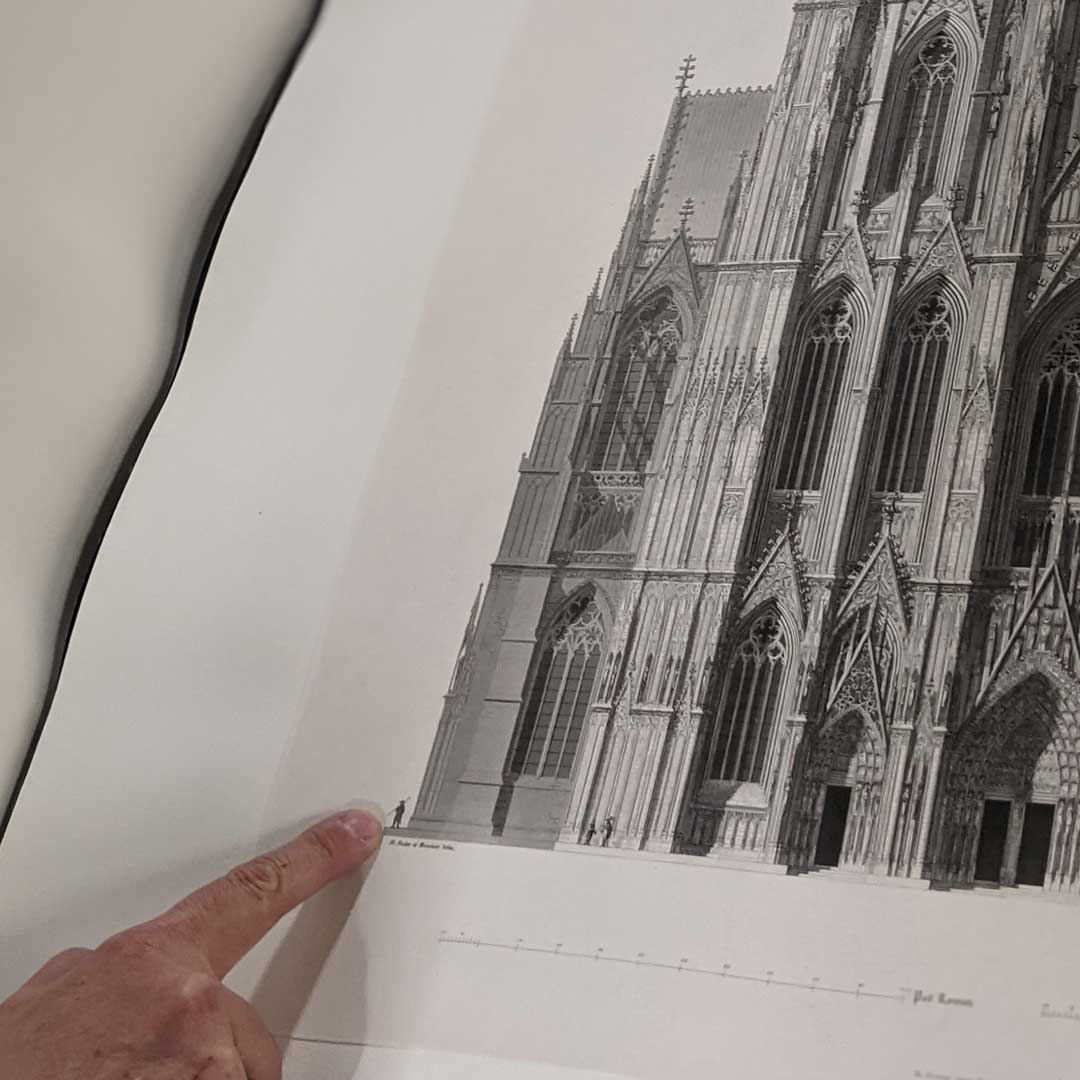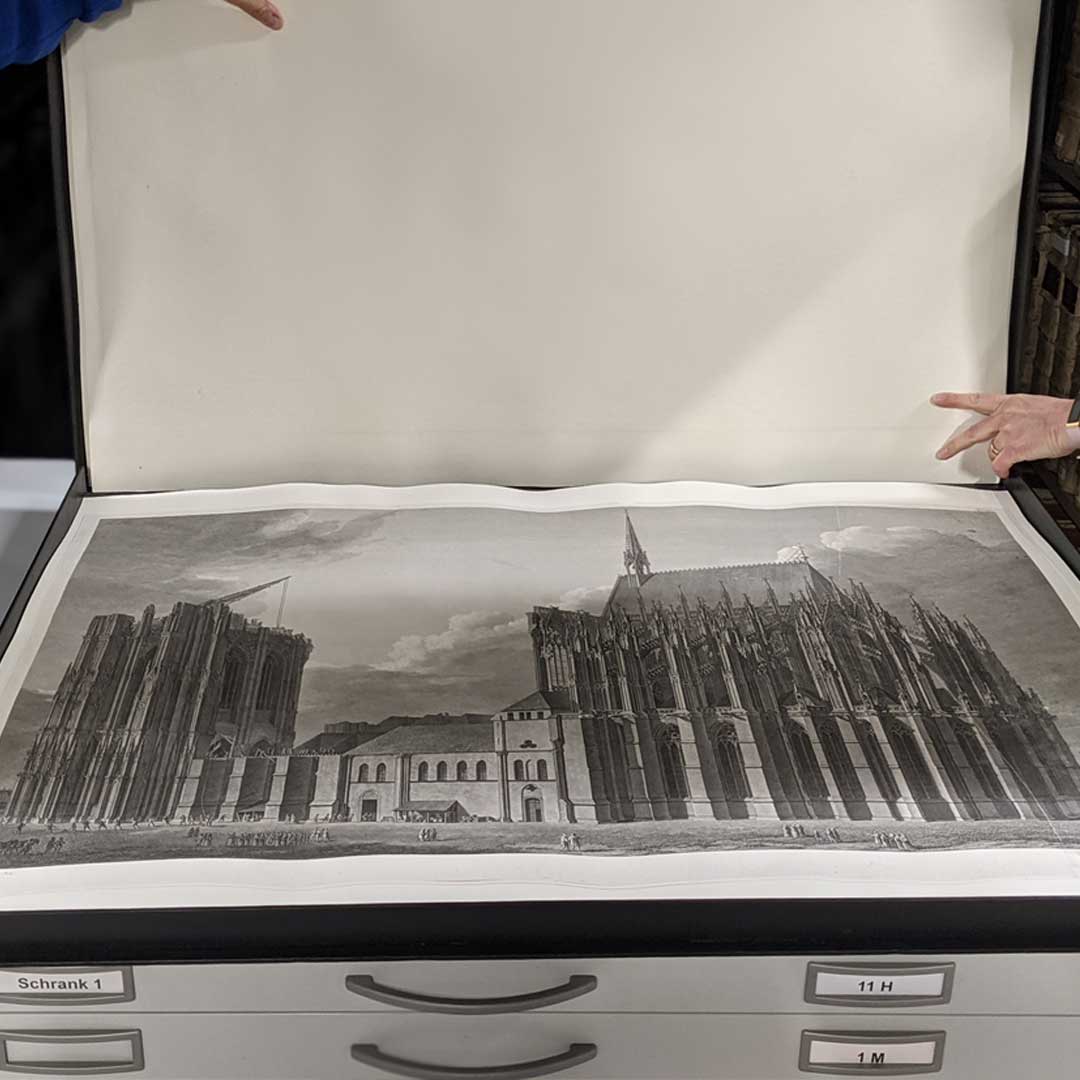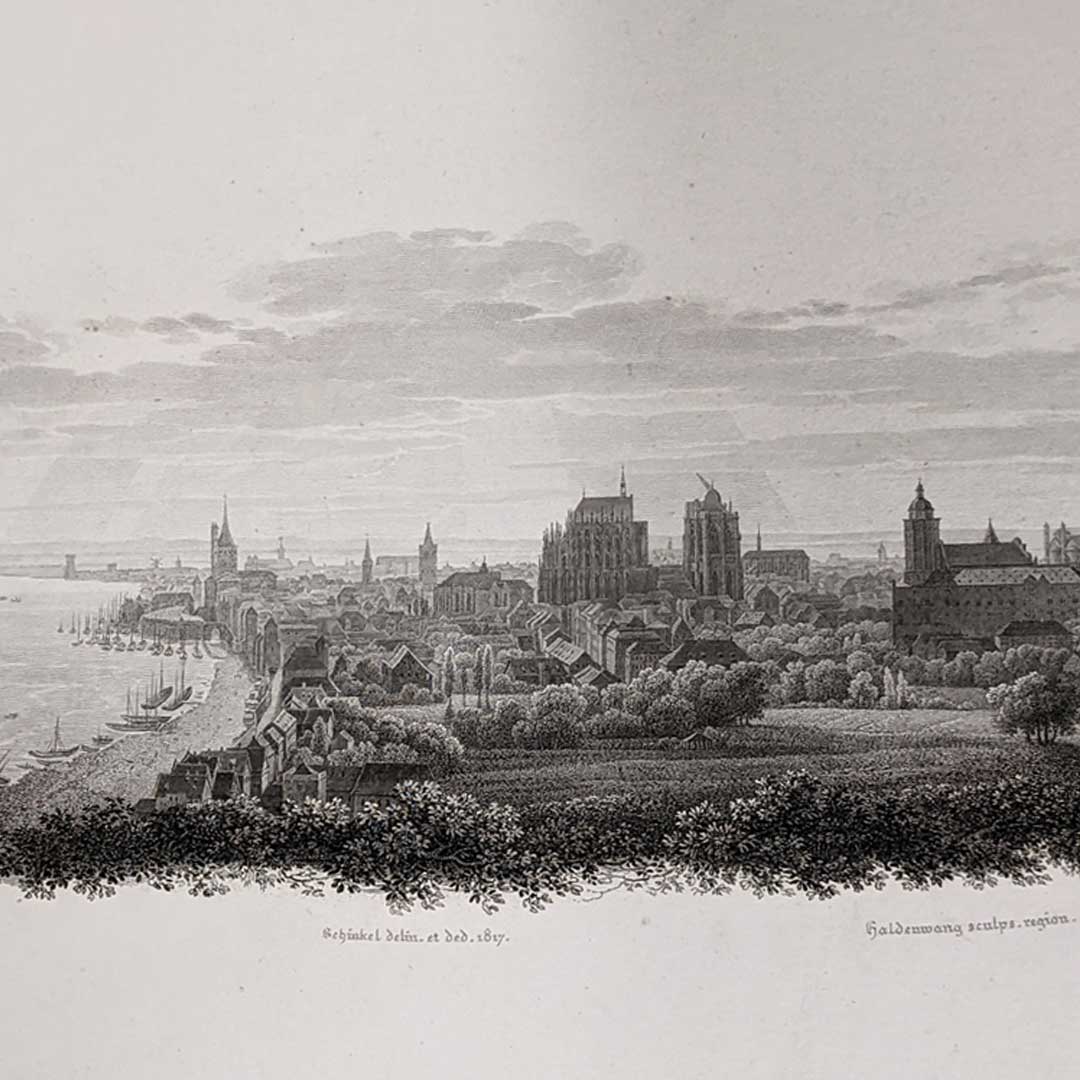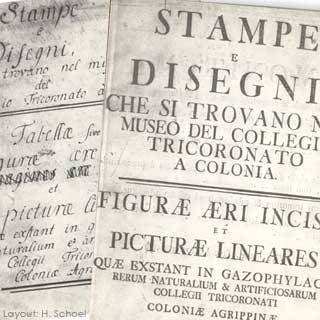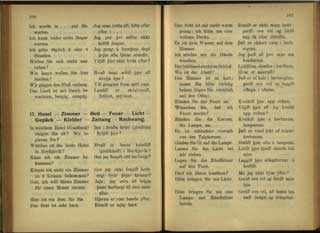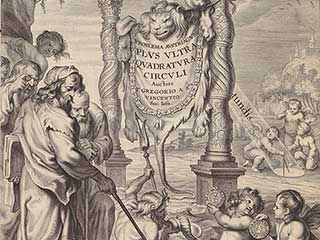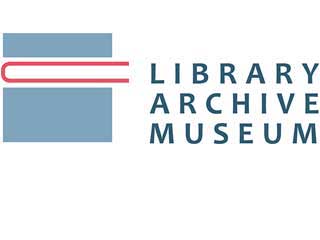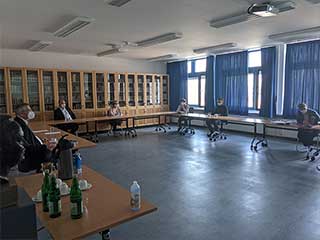2024
September 2024 - Sammlungen erzählen Geschichte
Unsere Sammlungsportale in der Ausstellung "Collect! Was wir sammeln."
Unsere Sammlungen sind Bibliotheken von Privatpersonen, die im Laufe ihres Lebens Bücher zu einem bestimmten Fachgebiet zusammengetragen haben. Wenn eine Sammlung zu uns passt und für Wissenschaft, Forschung und die Kölner Bürgerinnen und Bürger von Bedeutung ist, richten wir für sie ein eigenes Online-Portal ein. Dort kann man nicht nur bequem in der Sammlung recherchieren, wir fügen auch interessante Hintergrundinformationen hinzu. So werfen wir zum Beispiel ein Licht auf die - manchmal verschlungenen - Wege, auf denen die Sammlungen zu uns gelangt sind. Gelegentlich übernehmen wir auch ganze Bibliotheken von Institutionen, wie z.B. die Bibliothek des ehemaligen Belgischen Hauses am Neumarkt oder die Bibliothek der Evangelischen Bibliothek Köln.
Inzwischen pflegen wir über 80 solcher Sammlungsportale. Selbstverständlich sind alle Bestände auch über unseren Universitätskatalog zugänglich und recherchierbar.
In unserer Ausstellung „Collect! Was wir sammeln“ haben wir vom 24.09.2024 bis 17.11.2024 die Vielfalt des Sammelns und die Geschichten, die sich dahinter verbergen, gezeigt. Neben den faszinierenden Sammlungen, die uns Privatpersonen zur Verfügung stellten, präsentierten auch wir uns als Sammlerin: Denn als Universitäts- und Stadtbibliothek Köln sammeln wir seit unseren Anfängen ... Büchersammlungen!
Juli 2024 - Randnotiz über die Randnotiz
Buch neu gebunden, Randnotizen verloren: der Fall GBIV6900
Wenn Bücher neu gebunden wurden, hat man meist auch den Buchblock beschnitten. Hier kommentiert eine Eintragung am Rand von "De corpore Christi" von Thomas von Aquin, 1485, dass die älteren Randnoten nicht mehr ganz lesbar sind. Also eine Notiz über die (verlorene) Notiz. Übersetzt steht da: "Dieses Buch wurde beschnitten, nachdem die Dinge, die am Rand platziert worden sind, geschrieben worden sind." (hic liber scissus est postquam ea quae in margine posita sunt scripta sunt).
Dieser schöne Magazinfund von unserer Kollegin Svenja gehört zur Sammlung Gymnasialbibliothek und dank seines Druckdatums ebenfalls zu unserer Inkunabelsammlung. Das Buch ist digitalisiert und hat die Signatur: GBIV6900
April 2024 - Aus der Klosterbibliothek in die Comicwelt
Die Offenbarungen der heiligen Birgitta werden als Leihgabe und als Comic in der Abtei Brauweiler gezeigt.
Im Februar erreichte uns für den reich illustrierten Band „Revelationes caelestes : mit Vita abbreviata sanctae Birgittae ...“ aus dem Jahr 1500 eine Leihanfrage aus der Abtei Brauweiler. Bei der Durchsicht der zahlreichen Abbildungen entstand die Idee, daraus einen Comic zu gestalten. Unser Ziel: Das Leben und Wirken der heiligen Birgitta von Schweden unterhaltsam und informativ zusammenzufassen. Gegen Ende stellen wir auch eine kühne These auf, wie der Birgitten-Band in die Brauweiler Abteilung gelangt sein könnte. Das ist natürlich nur eine Vermutung ...
Die Inkunabel und den Comic „Birgitta 1300 -1373“ haben wir für die Ausstellung „Wissen & Bewahren - Schätze aus der Klosterbibliothek Brauweiler“, die vom 5. April bis 4. August 2024 in der Abtei Brauweiler vom Freundeskreis der Abtei Brauweiler e.V. gezeigt wurde, zur Verfügung gestellt >>
Der Band ist Teil der Sammlung "Gymnasialbibliothek", Signatur: GBIV1456
April 2024 - EIN BUCH IST EIN ORT. WALLRAFS BIBLIOTHEK FÜR KÖLN.
Die USB zu Gast im Historischen Archiv mit Rheinischem Bildarchiv
Vom 12. April bis 9. Juni 2024 präsentieren wir unsere Ausstellung "Ein Buch ist ein Ort. Wallrafs Bibliothek für Köln", die wir zusammen mit unserem Kulturpartner, dem Historischen Archiv mit Rheinischem Bildarchiv und dem Dreikönigsgymnasium geplant und ausgeführt haben.
Die Ausstellung bietet die seltene Gelegenheit, die Herzstücke der Wallraf'schen Bibliothek zu sehen, zu erfahren, welche Bedeutung sie für Wallraf hatten und wie wichtig ihre Rettung für uns heute ist.
EIN BUCH IST EIN ORT, ...
... in dem Ereignisse, Taten, Worte und Geschichten festgehalten werden. Nur so können sie überdauern und die Erinnerung bewahren. Die Bibliothek von Ferdinand Franz Wallraf war und ist der zentrale Ort seiner Sammlungen. Er sammelte und bewahrte Bücher, um das in ihnen enthaltene Wissen weiterzugeben. Die Aufgabe, Wallrafs Bibliothek zu bewahren und das darin gespeicherte Wissen zugänglich zu machen, bleibt eine ständige Herausforderung für die Institutionen, die sie besitzen, und die Gesellschaft.
Weiter Informationen und Impressionen zur Ausstellungseröffnung unter wallraf200.de >>
3D-Rundgang - "Ein Buch ist ein Ort"
April 2024 - Warning against pirated printing!
Licence struggle in the 17th century using the example of Johann Heinrich Voigt's 30-year calendar from 1674
Until the 20th century, there was no copyright law in Germany as we understand it today, which protects intellectual property both ideally and materially. The German Copyright Act itself only came into force in 1965.
Even in the early days of book printing, popular and therefore lucrative texts were subject to unauthorised reprints, so-called pirated editions. Printers - and later also publishers - therefore requested special rights from the authorities, which prohibited the unauthorised reprinting and distribution of texts, sometimes for a limited time or regionally. This special right was called a privilege. In return, the authorities were given the opportunity to influence the content and distribution of texts.
Johann Heinrich Voigt (1613-1691), mathematician, astronomer, author and publisher, provides a 30-year calendar with a clear warning to printers: "Unauthorised book reprinters are warned against reprinting and damage to the utmost."
This warning is printed directly below the "laurel wreath", which the physician and professor of medicine Johann Ludwig Hannemann (1640-1724) awarded the author for his work. Voigt also wrote in the imprint "In Verlegung des Authoris/bey welchem es auch zu bekommen".
His calendar was an attempt to harmonise the Julian calendar with the Gregorian calendar. It is an expanded edition of the work that had already been published in German two years earlier under the title "Calendrische An- und Vorschläge". Voigt dedicated the new calendar to Emperor Leopold I (1640-1705) and named it after him. Before his death, Voigt had already calculated the calendars up to 1721.
The Cologne coat of arms on the cover reveals that this book once stood in the Cologne Council Library, the so-called Syndicate Library.
Voigt, Johann Heinrich: Ein und Dreyssig-Jährige Calender-Prob, Deß Zur Christlichen Zeit- und Fest-Vereinigung unmaßgeblich vorgeschlagenen Leopoldischen Reichs-Calenders, Vom Jahre 1670 biß ins Jahr 1700, Hamburg: Jn Verlegung des Authoris 1674, Signatur: KALE25-1674
2022
December 2023 - WEGWEISER OR THE POWER OF MULTIDIVERSITY
Exhibition from 20 December 2023 to 15 March 2024
After a successful exhibition at the Kunst-Station Sankt Peter Köln in September 2022, we are now showing the WEGWEISER exhibition on our 1st floor - together with the Kölner Gymnasial- und Stiftungsfonds.
Here we present the things of the second glance: five stations tell stories that books in a school library only reveal when you open them - perhaps quite by chance.
The cultural programme on our website also includes an online exhibition on the "Wegweiser" with interesting background information on the exhibits (German)>>
Die Ausstellung entstand im Rahmen des Jesuitenprojekts, das im November 2023 erfolgreich abgeschlossen wurde. Erfahren Sie mehr dazu im Portal Kölner Jesuitensammlung >>
The exhibition was created as part of the Jesuit project, which was successfully completed in November 2023. Find out more on the Cologne Jesuit Collection portal >>
November 2023 - Finds from the Cologne Jesuit Collection
A book inside a book - recycling parchment in the Jesuit collection
The books in the Jesuit Collection often have a history prior to their inclusion in the College. This past can be seen, for example, in ownership entries and annotations by previous owners, but sometimes also in the external appearance of the books.
One example is the small octavo volume with the shelfmark GBIV1659, whose binding comes from an old parchment manuscript that was reused in bookbinding.
This recycling practice often concerned missals, which quickly became obsolete due to liturgical reforms and offered a lot of high-quality parchment material. The parchment binding of this book was made from a missal, and the surviving text contains Gregorian chants and Bible verses. This volume came into the Jesuit library in 1672. Find out more on the portal
The books in the Jesuit Collection often have a history prior to their inclusion in the College. This past can be seen, for example, in ownership entries and annotations by previous owners, but sometimes also in the external appearance of the books.
One example is the small octavo volume with the shelfmark GBIV1659, whose binding comes from an old parchment manuscript that was reused in bookbinding.
This recycling practice often concerned missals, which quickly became obsolete due to liturgical reforms and offered a lot of high-quality parchment material. The parchment binding of this book was made from a missal, and the surviving text contains Gregorian chants and Bible verses. This volume came into the Jesuit library in 1672. Find out more on the portal Kölner Jesuitensammlung >>
Oktober 2023 - Festumzug zur Vollendung des Kölner Doms vor 143 Jahren
16 October 1880
What looks like a carnival procession here is a replica of the procession to mark the completion of Cologne Cathedral on the second day of the cathedral building festival in 1880, 16 October 1880 - exactly 143 years ago - in the presence of Emperor Wilhelm I (1797-1888).
Tony Avenarius captured the event in his publication "Historical procession, organised at the celebration of the completion of Cologne Cathedral on 16 October 1880". He used photographs of the procession as a model, after which he produced 29 colour lithographs. The prints were extremely detailed and accurately depicted the facial features of the participants. This was probably one of the reasons why the book was so popular with the participants in the procession.
In the same year, Gottfried Eckertz published an "Explanation" of the pageant. It describes the background, sequence and roles of the participants as well as the groups of gymnastics clubs, guilds and military troops.
In 2022, the Avenarius volume was restored as part of our book sponsorship programme "Cologne Book Treasures" thanks to the Sal. Oppenheim Foundation and is now a valuable contemporary testimony. It is part of our collection "The Old Cologne City Library" and has been digitised.
About the parade
Although the completion of Cologne Cathedral was celebrated, the Catholic Church largely stayed away from the festival due to conflicts with the emperor, so the citizens of Cologne took over the financing and organisation of the procession. The festival committee consisted of 24 committed citizens, supported by 6 representatives each from the City of Cologne and the Central Cathedral Building Association.
A total of around 1,000 people in historical costumes, 400 horses and 8 floats took part in the procession. The procession was divided into three sections, reflecting the different construction phases of the cathedral: From the laying of the foundation stone to the continued construction to the completion of the High Choir. It included prominent personalities among its main protagonists and even Johannes Fastenrath, whose library is now in our possession, was part of the festive committee and actively involved in the procession (see gallery pictures 2+3).
Further links:
- Tony Avenarius: Historischer Festzug, veranstaltet bei der Feier der Vollendung des Kölner Domes am 16. October 1880. Hamburg: Mühlmeister & Johler, ([1880]) Signatur: RHFOL648#2
- Eckertz, Gottfried: Zur Erklärung des Historischen Fest-Zuges veranstaltet zur Feier der Vollendung des Kölner Domes am 16. Oktober 1880. Köln: Adolf Wallraf 1880 Signatur: RHFOL472
- Book sponsorship programme "All of Cologne is still full of book treasures" - Die alte Kölner Stadtbibliothek >>
- "Bibliothek Johannes Fastenrath" >>
- "Die alte Kölner Stadtbibliothek" >>
23 July 2023 - 200 years ago, Ferdinand Franz Wallraf celebrated his 75th birthday
Cologne celebrated Wallraf's birthday on 20 July 1823
On his 75th birthday, his hometown honoured him with a public celebration and named him (the only one, by the way) "archcitizen of Cologne". This shows how highly regarded he was in Cologne, because the celebration was a kind of public festival. We possess a copy of the original programme of this "birthday celebration", which Johann Jakob Merlo (1810-1890) prepared for the city archivist Johann Peter Fuchs (1782-1857) on 4 January 1866. Johann Peter Fuchs arranged Wallraf's library after his death.
About the Ferdinand Franz Wallraf Collection >> About the Ferdinand Franz Wallraf Collection
"Wallraf's Book" book Sponsorship programm >> Wallraf's Books" book sponsorship programme
June 2023 - Incunabula finds in Cologne Jesuit collection are now being digitised!
Treasures of the Cologne Jesuit Library:
70 incunabula and 23 early printed books are now being digitised!
The Jesuit Library in Cologne houses an astonishing collection of incunabula, also known as cradle prints, from the 15th century, although the Jesuit Order itself was not founded until 1540. The Jesuits acquired these valuable prints either antiquarian or received them as generous donations. Our Jesuit team found 70 such incunabula and 23 early printed books from the early 16th century in the grammar school library and was able to verify them as holdings of the former Jesuit library in Cologne.
As part of the cataloguing project "Reconstruction of the Cologne Jesuit Library", these unique works were recently comprehensively catalogued and are now searchable in the portal "Jesuit Collection Cologne". We will now digitise these bibliophilic treasures in order to make them successively accessible online for our users. Soon you will be able to discover and view the incunabula of the Cologne Jesuit Library from the comfort of your own home! We will keep you up to date.
The grammar school library is on permanent loan from the Cologne Grammar School and Foundation Fund, on whose behalf we preserve, research and even expand this valuable collection. The project "Reconstruction of the Cologne Jesuit Library" is also made possible by the support of the Kölner Gymnasial- und Stiftungsfonds >>
To the Cologne Jesuit Collection >>
To the Grammar School Library >>
At the same time, the incunabula from Jesuit possession can also be researched in our Incunabula Collection >>.
Photo gallery: Missale Magdeburgense. Magdeburg: Moritz Brandis, 14.IV.1497. 2° Signature: GBIV5366
May 2023 - Cooperation with the Cologne Municipal Museum: "1794 Cologne Paris"
The Kölnisches Stadtmuseum is showing a brand new exhibition with free live events in its POP-UP-BAR: 1794 COLOGNE PARIS!
To get you in the mood, we have set up a small display case in our foyer. There you can see the original print of an announcement from 7 October 1794, the day after the French revolutionary armies stood at the gates of Cologne, Cologne capitulated and handed over the city keys. Cologne thus became French and remained so until 1814. A small document that gives you an insight into the Cologne of 1794.
All information on the exhibition at: POP-UP-BAR 1794 Cologne Paris
The broadsheet is part of our collection Rhenish Monographs >>
8 March 2023 - International Women's Day ♀
Remembering Mathilde Franziska Anneke (1817-1884) and Regina Ruben (1858-1943)
"In my opinion, the struggle in this world is precisely the most beautiful thing we have" - this is the motto of Regina Ruben, whom the historian and publicist Irene Franken presents in her recently published biography in cooperation with the University and City Library. With her biography, Irene Franken has saved Regina Ruben from oblivion.
As part of our regular annual gifts to members of the Cologne Library Society, two small books have been published about and by Regina Ruben, the "lifelong fighter" - for in addition to the short biography, the slipcase also contains her 1905 writing about the 1848 revolutionary and first great advocate of women's suffrage Mathilde Franziska Anneke.
It is known about the Jewish writer and communist Ruben that she was active in the radical Hamburg women's movement and had contact with Rosa Luxemburg and Karl Liebknecht. From 1919 she was a member of the German Communist Party; in the early 1940s she went into exile in Holland. She died in the Sobibor extermination camp in 1943.
The reprint on Mathilde Franziska Anneke has been bound by our bindery in a beautiful special edition in the colours of the suffragettes - green, white and purple.
If you are interested in the publication, you can buy it on the page "Jahresgaben der Kölnischen Bibliotheksgesellschaft"
2022
17. November 2022 - New collection portal "ALTE KÖLNER STUDENTENBÜCHEREI" (Old Cologne Student Library)
What interested and moved Cologne students in the interwar period from 1920 - 1940?"
This can be seen well in the stock of the old Cologne student library, founded in the summer semester of 1920.
The selection of the collection took into account the wishes of the users.
Therefore, the collection contains the entire literary diversity of the first half of the twentieth century and includes writers who were close to National Socialism or were ostracised by it. The collection reflects the themes that accompanied student life in Cologne at the time.
So far, we have found over 250 books from the old student library in our holdings and assigned them to the new collection.
To the collection portal KÖLNER STUDENTENBÜCHEREI >>
17 November 2022
8 November 1942 - 80 years ago Helene Richter died in the concentration camp Theresienstadt
Helene Richter was an Austrian Anglicist and theater scholar. The private library, which she built up together with her sister Elise, was sold as a distress sale to the USB Cologne in 1942 and is now considered a Nazi-confiscated cultural asset. The library was reconstructed in 2005 as part of the Nazi provenance research, and in the course of restitution an amicable agreement was reached with the heirs living in England in 2014. According to this agreement, the books will remain at the USB Cologne and will thus continue to be available to scholars. In 2009, Dr. Christiane Hoffrath carefully documented and reviewed the history of this library in her publication „Bücherspuren“.
A special find in the library is a typescript by Helene Richter, published in 2011 in our Electronic Series: "Die drei großen Tragödinnen des Burgtheaters im 19. Jahrhundert.", PDF (79MB)
Helene Richter: autodidact - anglicist - theater scholar
Like her younger sister Elise, Helene received private lessons. As an autodidact, she devoted herself to English studies and published translations and non-fiction books from 1895. She received honorary doctorates from the universities of Heidelberg and Erlangen, and her hometown named her an "honorary citizen of the city of Vienna."
In March 1938, the University of Vienna revoked the teaching license of her sister Elise Richter, who had habilitated in 1904, and she was banned from libraries. Subsequently, for financial reasons, Elise and Helene Richter sold their library, most of which was sold to the University and City Library of Cologne and the Austrian National Library. In March 1942, they had to move to a Jewish old people's home. From there they were deported to the Theresienstadt concentration camp in October 1942, where Helene died on November 8, 1942. A few months later, her sister Elise Richter also died there on 21 June 1943.
The library of Elise and Helene Richter was one of the first collections in our holdings to have its own collection portal: "Virtuelle Bibliothek Elise und Helene Richter".
8. November 2022
31 October 2022 - Finds from the closed stacks: Ambroise Paré - Father of French Surgery
At first glance, this is a ghoulishly beautiful Halloween accessory. But then it turns out that we have medical classics in our hands: A Dutch edition of Ambroise Paré's treatise on the treatment of wounds caused by firearms and gunpowder.
Ambroise Paré (* c. 1510, † 1590), was a French surgeon and is still considered a pioneer of modern surgery and the founder of facial prosthetics. After training as a barber, he worked for many years as a military surgeon on the battlefields of Europe, where he treated soldiers, generals and even kings with great success. He developed treatment methods for injuries caused by the new types of firearms that gave soldiers a better chance of survival. He was the first to describe gangrene and design advanced prostheses. But he also made significant advances in other medical fields, such as obstetrics.
Despite his lack of academic training, Ambroise Paré was admitted as maître en chirurgie to the Collège de Saint Côme, the surgical college of the Paris medical faculty, in 1554. Due to his great practical and scientific merits in surgery, he was called the "father of French surgery".
In 1545, Paré published his treatise "La méthode de traicter les playes faictes par hacquebutes et aultres bastons à feu", which is considered a milestone in the history of surgery. Publications written for practical use were often subject to wear and tear, so that only a few copies exist today. And our edition, a Dutch translation from 1556, also shows clear signs of wear. It was printed in Antwerp and belongs to the Gymnasium Library collection.
Shelf mark: GBIX+C
31 October 2022
1 October 1901 - First report on the discovery of the Waldseemüllerkarte from 1507 appears in Kölnische Volkszeitung
In 1901, the Jesuit priest Josef Fischer found what is probably the only surviving copy of Martin Waldseemüller's world map from 1507 in the Wolfegg castle library near Ravensburg. The name "America" was written on this map for the first time. The find went through the entire world press at that time. Josef Fischer himself, together with Prof. Franz von Wieser, published the volume "Die älteste Karte mit dem Namen Amerika aus dem Jahre 1507, und die Carta marina aus dem Jahre 1516" in 1903. The Austrian scientist Dr. Philipp Schöbi found out that the very first report about the sensational find should have appeared in the Kölnische Volkzeitung and thereupon contacted us. And indeed: Through autoptic research, we discovered the small article: Tuesday, October 1, 1901, on the third sheet in the evening edition, p. 1, bottom right in the "World and Knowledge" section. Thus, we were able to confirm Mr. Schöbi's assumption, supplement his research result with a scan of the newspaper page and put it in the light of day.
Shelf mark: ZTG14+A-1901(11.7/8.11)
About the Waldseemüller map or How America got its name
Martin Waldseemüller's 1507 map of the world was the first map to depict a new continent in the West: AMERICA. The map documented the latest geographical discoveries resulting from the Portuguese and Spanish explorations of the late 15th and early 16th centuries. Cartographer Waldseemüller relied on data collected by Amerigo Vespucci during his voyages to the New World in 1501-02. In recognition of Vespucci's realization that a new continent had been discovered, Waldseemüller christened it "America." This map is the only known surviving copy of the first edition, of which probably 1,000 were printed. The depiction of the newly discovered American land dimensions changed the European understanding of a world that until then had only known Europe, Asia, and Africa.
(Source: Library of Congress, Digitale Weltbibliothek)
In 2001, the Waldseemüllerkarte was sold to the Library of Congress. Since 2005, it has been part of the UNESCO World Documentary Heritage.
(Source: Wikipedia)
1 October 2022
2 September 2022 - "GUIDE OR THE POWER OF MULTIPLICITY"
WEGWEISER ODER DIE MACHT DER MEHRDEUTIGKEIT
Exhibition at the Art Station Sankt Peter Cologne, 02.09.-02.10.2022
In September 2022 we will be guests at the Kunst-Station Sankt Peter Köln together with the Kölner Gymnasial- und Stiftungsfonds.
The exhibition "Wegweiser" arises from the Cologne Jesuit Collection and aims to present the things of the second glance: Five stations tell stories that books in a school library only reveal when you open them - perhaps quite by random.
2 September 2022
20 August 1792 - 230 years ago the Parisian architect Jacob Ignaz Hittorff was born in Cologne
Jakob Ignaz Hittorff, the son of a master sheet metal worker from Cologne, was an architect in Paris in the first half of the 19th century. His works included the church of St-Vincent-de-Paul, the Cirque d'hiver and the Gare du Nord railway station in Paris, which was the largest in the world at the time. At the age of 16, Hittorff was apprenticed to the Cologne master mason Franz Leisten (1754-1833). In 1810, equipped with letters of recommendation from Ferdinand Franz Wallraf and his Cologne friend Franz Christian Gau, he moved to Paris. There he was admitted to the École des Beaux-Arts in 1811.
His artistic estate came to the city of Cologne in 1898. His very well-preserved books on art and archaeology came via the City Library to the UCL, which was newly established in 1920, including albums with around 2,500 original drawings, which have been published in seven inventories so far in our Hittorff-Schriftenreihe. Volume 8 will be published in 2023.
To the Jakob Ignaz Hittorff Collection >>
20 August 2022
9 June 1832 -190 years ago Friedrich von Gentz died
Friedrich von Gentz was a publicist, "noble pen", Austrian diplomat and statesman. Above all, he was an enthusiastic European and a late Enlightenment thinker. In 1814, Gentz was Secretary General and Secretary of the Congress of Vienna as well as all other congresses of post-Napoleonic Europe up to the Congress of Verona in 1822. [1] Friedrich von Gentz died in Vienna on 9 June 1832.
In 2008, we received the Gentz Archive as a donation from Günter Herterich, Cologne SPD politician and historian, who had collected documents by and about Friedrich von Gentz over a period of almost 30 years. He concentrated on the extensive correspondence of the Viennese diplomat. In 2008, Herterich donated his archive to the UCL Cologne.
In addition, Herterich gave the UCL around 5,000 books from his extensive library with a focus on recent German and Latin American history.
[1] Raphaël Cahen: "Forscherglück: vom wissenschaftlichen Arbeiten mit Nachlässen am Beispiel der Gentz-Sammlung Herterich"
Friedrich von Gentz, Herterich Collection >>
9 June 2022
31 May 2022 - "Books on the road" in summer 2022
Some of our book treasures are spending this summer in Münster, Düsseldorf, Arnsberg and Essen. From now on you can also see in the foyer where the book journeys are going. A QR code will take you to the exhibition descriptions.
We are a little proud that our stock is in such demand - and our books are also happy to see something else ...
Books on a journey - loans for museums >>
31 May 2022
1 April 1932 - Heinrich Erkes died 90 years ago: merchant, Iceland researcher and librarian in Cologne
The heart of our Islandica collection is a donation from Heinrich Erkes: in 1920, about 4500 titles from and about Iceland entered the UCL's holdings.
Heinrich Erkes was born in Elberfeld in 1864 and grew up in Cologne. After studying modern languages and geology in Bonn for a few years, he joined his parents' trading company as a merchant and ran it on his own responsibility from 1900.
Also from 1900 onwards, Erkes intensively studied Iceland, learned Icelandic and visited the island for the first time in 1905. After the First World War, which had destroyed his merchant business, he was employed in 1920 as a scientific librarian at the newly founded University and City Library. So he was a former colleague of ours. He travelled to Iceland eight more times until 1930. Erkes collected books, newspapers, magazines and maps from and about Iceland very systematically, so that he eventually had a collection of several thousand Icelandic titles, which was unique for a private person.
Source: Hoffrath, Christiane: Die Sammlung Islandica in der Universitäts- und Stadtbibliothek Köln, In: Syré, Ludger (Hg.): Ressourcen für die Forschung. Spezialsammlungen in Bibliotheken. Frankfurt am Main: Klostermann, 2018. (Zeitschrift für Bibliothekswesen und Bibliographie, Sonderband 123), S. 101-111.
Heinrich Erkes in the Portal Islandica Collection >>
1 April 2022
March 8, 2022 - International Women's Day: Mathilde von Mevissen - women's rights activist and co-founder of the Cologne Women's Education Association
Mathilde von Mevissen (1848-1924) was the second eldest of the five Mevissen daughters. As was common in the 19th century, the girls did not receive a well-rounded education. Attendance at a school was replaced by home tutors. "In all knowledge I am a homeopath - have always taken only the very smallest doses," she wrote years later. She discovered ways and means to secretly obtain books from her father's rich library, which was forbidden to the children, in order to quench her thirst for knowledge. As an adult, she was a strong advocate for women's rights (women's vote) and especially for the education and advancement of girls. She was a co-founder of the Cologne Women's Further Education Association, which was founded in 1894. The fact that a girls' high school - the first in Prussia - was opened in Cologne in 1903 was due to her commitment and financial support. She was still alive when this school was named after her in 1923. As a person of merit in the city's history, the city of Cologne honors the memory of Mathilde von Mevissen with a sculpture in the figure program of the City Hall tower.
"Da ich unglücklich war und wohl etwas unterdrückt - Mathilde von Mevissen und die Mädchenbildung"
in: Jahrbuch des Kölnischen Geschichtsvereins ; volume 75, issue 1, page 87-142 ; ISSN 0341-9320 2198-0675, (2004)
To the collection of the Family von Mevissen >>
8 March 2022
17 February 1602 - The Cologne Council Library was founded 420 years ago ...
In February 1602, the Cologne City Council decided to found a "Senate Library" or "Syndicate Library". There was an urgent need for literature for the everyday life of the authorities, especially for the subject areas of law, political science and history - so a library had to be set up. The collection grew very slowly: by the beginning of the 19th century, it filled only a few shelf metres with 1,800 volumes. The book stock in the town hall increased suddenly in 1824 when the late Rector of the University Ferdinand Franz Wallraf bequeathed his entire estate to his father's town. Wallraf's library of some 14,000 volumes was now also housed in the town hall. From the Town Hall tower, the Syndicate and Wallraf Library moved to the Hansa Hall, from there to the Council Chapel and later to the Spanish Building - and that was not the last location. In 1884, the stock was expanded once again to include the grammar school library and the three libraries became the academic city library, which was used by broad sections of the city's society. Today, the syndicate library is once again housed in the UCL in its original closed arrangement under the shelfmark group "SB".
For more information on the early book collections that formed the basis of our holdings, see these collection portals:
2021
Iceland's books and a beautiful Christmas tradition
In the books of our Cologne Iceland collection you can find traces of former users again and again. In this collection of psalms from 1754, for example, someone has entered a handwritten alphabet including special characters æ, þ and ø (today: ö); in addition, various people have immortalized themselves with names in the volume. In addition to pastor Jón Magnússon from Hvammur, to whom the book probably belonged, we find Jón Helgason and Jón Jónsson, but also the maiden names Ástríður and Þorbjörg. Perhaps these were Pastor Jón's students?
In Iceland, literary tradition has played a major role since the Middle Ages, so many people learned to read and write at an early age. Paper was needed for this! But because there were no paper mills in Iceland for a long time, the raw material was scarce. So books were written on the unprinted sheets.
Today there is enough paper in Iceland and especially in the pre-Christmas period many new books are published. Due to the so-called Christmas book flood (isl. Jólabókaflóð), books have become the traditional Christmas gift (and chocolate!) - perfect for delving into exciting stories in the quiet time between the holidays.
If you would like to learn more about our Islandica collection, take a look at our collection portal >>
December 27, 2021
Brilliant marketing in the 19th century
or How an Art Collector pushed for the Finishing of Cologne Cathedral
A story to set the mood for Advent:
Sulpiz Boisserée (*1783 †1854), a Cologne art collector, historian and one of the main initiators of the completion of the cathedral in the 19th century, dreamed of the finishing of the cathedral as early as 1808 and began to make drawings of the existing components. After finding one half of the revised medieval facade plan 8 years later, he published his "Ansichten, Risse und einzelne Theile des Doms von Köln ..." starting in 1821, exactly 200 years ago. A series of copperplate engravings after drawings by Angelo Quaglio, Friedrich Schinkel and Georg Moller, among others. For the spire of the crossing tower, Boisserée planned a star as a symbol for the shrine of the Three Kings, which, after several changes of location, is now located behind the high altar.
The drawings showed what the cathedral might one day look like - an excellent means of spreading an idea and literally showing his contemporaries the goal. Boisserée's plan worked and with his publication he triggered a nationwide enthusiasm for the construction of the cathedral, which at that time had been interrupted for almost 300 years.
Boisserée's work in our collection: The 3rd delivery from 1823 is in the collection Jacob Ignaz Hittorff >> and the complete edition in our collection focus Rheinland >>
November 26 2021
Project "Saving the Wallraf Library"
in the KEK exhibition "Original conservation in perspective"
The KEK celebrates its 10th birthday and project "Save the Library of Ferdinand Franz Wallraf" is part of its exhibition "Original conservation in Perspective"!
What does KEK mean! - KEK is short for "Koordinierungsstelle für die Erhaltung des schriftlichen Kulturguts" (Coordination Office for the Preservation of Written Cultural Heritage). It was founded in Berlin in 2011 to support archives and libraries in the protection of written cultural assets and to coordinate work across state and divisional borders.
The CEC is now documenting its work with an online exhibition. Using 10 objects, it shows how diverse our written cultural property is: the spectrum ranges from books made of wax to GDR posters from 1948-1961 to the first e-mail received in Germany in 1984.
We are represented there with the library of Ferdinand Franz Wallraf. Because when Wallraf dies, the city of Cologne inherits his estate:
"... As heiress of my entire estate [...] I appoint the city and municipality of Cologne, my hometown." Thanks to his decree, Wallraf's library became the foundation of our holdings. During the Second World War, his library had to be moved to a monastery cellar. The damp indoor climate led to considerable inventory damage, which has now been permanently secured in the BKM special program (Bundesregierung für Kultur und Medien = Federal Government for Culture and Media) from 2018 to 2020.
Detailed information on the project "Saving the Library of Ferdinand Franz Wallraf" can be found here:
Teil I - Teil II - Teil III
To the collection portal "Bibliothek von Ferdinand Franz Wallraf" >>
November 9, 2021
All Saints' Day 2021 - The death note collection in a new design and with a new function
Jesus, Mary and Joseph!
You may be familiar with this: on All Saints' Day and All Souls' Day, people commemorate the deceased through prayers and special grave decorations.
But does the expression death notes (Totenzettel) also mean something to you? In the beginning they were distributed to the mourners at the funeral mass, later they were also mailed or published in newspapers.
Over the centuries, of course, the content and design changed - in the 18th and 19th centuries, for example, the phrase "Jesus! Maria! Joseph!" often introduced the death note text. Depending on the style, detailed descriptions of the circumstances of life and death followed, which makes the death notes an informative source for genealogists and family researchers.
We have assembled a collection of more than 14,000 death notes in the USB. Now it appears in a new design and with the additional register "Provenience". All citizens who send us death notes are listed there. Of course, we continue to collect so that the database grows continuously. Have you kept any death notes and would like to see them safely preserved? Then we would be happy to add them to our collection, digitize them and keep the originals safe! You can send us the death notices to:
Cologne University and City Library
Universitäts- und Stadtbibliothek Köln
Universitätsstraße 33
50931 Köln
November 1, 2021
Jesuit Collection - Searching for traces of scattered objects
250 year old index of Cologne drawings and prints is online!
It was a good idea that Jacob Heyder - a Cologne Jesuit - compiled an inventory of the prints and drawings in the Cologne Jesuit library in 1778 ("Stampe e disegni, che si trovano nel museo del Collegio Tricoronato a Colonia"). For 16 years later, in 1794, Cologne was occupied by French revolutionary troops. In the same year, French commissars began to confiscate cultural objects of the city and to transfer them to Paris, among them parts of the Cologne Jesuit collections. In addition to valuable books, some 27,500 drawings were also taken away, which are still kept in the Louvre in Paris today. There they were roughly systematized and cataloged.
Heyder's list, however, is more finely structured and depicts the collection at an earlier date than the Paris lists - on which some works of art are therefore missing. The Heyder catalog thus remains the central source for reconstructing the collection in Jesuit times. Now it is available online.
We continue to work on reconstructing the Jesuit Library virtually. You can read what we have discovered so far and what we are still looking for on the Jesuit Portal at: "The scattered collection" >
October 19, 2021
Reference date 14 September 1321
700 years ago Dante Alighieri died in Ravenna
It is not entirely certain exactly when Dante Alighieri, Italy's most famous poet, was born in 1265. What is certain, however, is that he died in Ravenna on September 14, 1321 - 700 years ago today - and that with his Divine Comedy he turned Italian into a literary language.
On the occasion of the Dante anniversary, Dr. Cristina Dondi of Oxford University asked us to participate in the Polonsky Foundation and MEI/CERL project. Here, all copies of a particular Dante edition of "La Commedia" from 1481 are to be recorded. In addition to our copy, some 172 volumes from other libraries are listed with their specific provenances, such as handwritten entries. This allows historians to trace the spread and history of this particular edition as a whole and see the path it has taken through Europe and the centuries.
In our Digital Dante Collection, whose basic stock of about 900 volumes goes back to the private collector Wilhelm Reiners, you will of course find numerous original-language Dante editions and Dante letters, but also commentaries, research reports, biographical works, and literature about the Renaissance. We are constantly expanding this Dante collection, incidentally one of the most comprehensive in Germany, with new acquisitions.
To the MEI entry of our Commedia edition from the year 1481 >>
Dante Collection (Wilhelm Reiners) >>
September 14, 2021
Start date July 29, 2021
436.000 pages on Rhineland and German history can now be accessed online
Search the "Kölnische Zeitung" in full text from 1803-1945
>> https://zeitpunkt.nrw/ulbbn/periodical/titleinfo/9715711
The "Kölnische Zeitung" is one of the most important national German newspapers of the 19th and 20th centuries.
This newspaper is known beyond the Rhineland and currently the only OCR-enabled newspaper at zeitpunkt.nrw .
The University and City Library of Cologne and the University and State Library digitised the newspaper as part of a two-year DFG project (July 2019 - May 2021).
The cooperation partner was the Institut für Zeitungsforschung in Dortmund.
The gap filling has been supported so far by:
- the Abteilung für Geschichte der Frühen Neuzeit und Rheinischen Landesgeschichte der Universität Bonn
- the Staatsbibliothek zu Berlin
- the Institut für Zeitungsforschung in Dortmund
- the Universitäts- und Landesbibliothek Münster
- the Universitäts- und Landesbibliothek Düsseldorf.
A total of approx. 436,000 pages have been scanned in Cologne and Düsseldorf from the years 1803 - 1945. Issues still missing from the last six months of the newspaper (October 1944 to the beginning of April 1945) are to be added gradually.
July 29, 2021
Collection launch 24 June 2021 - Donation of the collector Immo Mikloweit to the automobile history in Cologne is now online!
As early as 1877, the first steam-powered motor vehicle rattled through Cologne, followed by the first gasoline-powered vehicle in 1888. After the turn of the century, a short period of electric drive followed; the first cabs and also the first Cologne ambulance and post van drove with electric drive (!).
The car expert Mikloweit researched the history of automobile manufacturing in Cologne and published his knowledge in numerous publications.
Learn more about the Collection Immo Mikloweit >>
2021/06/24
1906 - 115 years ago, the first German-New Zealand phrasebook for tourist travel was published
With approximately 10,000 titles, we now maintain an Islandica collection that is unique in the German-speaking world. The foundation for this was the private collection of Heinrich Erkes with about 4500 titles, which he donated to the USB in 1920.
The merchant, social democrat and librarian (at the newly founded University and City Library of Cologne) systematically collected books, newspapers, magazines and maps from and about Iceland. 232 book titles of which were published before 1800, such as a print of the first Icelandic Bible from 1584 or various editions of the Edda sagas. Erkes created an alphabetical handwritten catalog in addition to a card catalog, the original of which is now in the National Library in Reykjavik. We own a copy of the catalog and have digitized it.
Furthermore, we acquire current Icelandica literature and thus continuously expand the collection's holdings.
- Heinrich Erkes: Kurzer Deutsch-Neuisländischer Sprachführer mit Grammatik und Wörterverzeichnis, 1906, Library shelfmark: L36/355.
Browse directly in the language guide language guide >> - Heinrich Erkes: Katalog der Islandsammlung, [um 1930], Library shelfmark: 5P411.
- Zur Sammlung Islandica >>
2021/05/01
Launch of the Virtual Jesuit Collection Cologne on 21. May 2021 - a LAM project (Library, Archive, Museum) of the ULC Cologne.
„Lieber ein Kollegium ohne eigene Kirche als ein Kollegium ohne eigene Bibliothek“
"Better a college without its own church than a college without its own library"
This was the attitude of Petrus Canisius (1521-1597), a Dutch Jesuit who had a decisive influence on the beginnings of the Jesuits north of the Alps.
From 1556 - 1773, the Cologne Jesuit order had both: St. Mary's Assumption, the collegiate church located on Marzellenstraße, and the collegiate library, also housed there, which, among other things, supplied the Tricoronatum (Dreikönigsgymnasium) with school literature.
Today, this library is scattered among the 40,000-volume Gymnasium library. Thanks to the support of the Cologne Gymnasium and Foundation Fund (GSF), we have now been able to reconstruct part of this library in a collection portal.
For this purpose, our three-member "Jesuit Team", consisting of a doctoral student, a graduate librarian and a student assistant, searched the holdings of the Gymnasialbibliothek set up at our premises for books from the Jesuit Library and presented the results of their work to the Cologne Gymnasial- und Stiftungsfonds on April 21, 2021. Examination by autopsy provides answers to questions such as, "Which books were obtained for study and teaching?" or even "Which books were not allowed to be kept in the school library?"
In addition, the ownership entries present in the volumes provide valuable information about the relations of the Cologne Jesuits with their brethren in other European countries. A catastrophe for the Jesuits, but an opportunity for today's research, is the library fire of 1621, which made it necessary to rebuild the book collection.
Other project partners funded by the GKF are the Wallraf-Richartz-Museum & Fondation Corboud and the Chair of Early Modern History. Together, we pursue the goal of researching and describing the Jesuit collections.
Before the project funding by the Cologne Grammar School and Foundation Fund ends in 2022, the collection will be supplemented with drawings and prints from the Wallraf-Richartz-Museum.
To the Jesuit Collection Cologne >>
Learn more about the LAM project of the USB Cologne >>
2021/04/21
On this day, 04 April 2021
Fire of the Cologne Jesuit Library 400 years ago. In the same year, the Jesuits started the rebuilding of their library, which they again housed in buildings on Marzellenstrasse.
The Jesuits had been resident in Cologne since 1544/45 and had run the Gymnasium Tricoronatum (Three Kings' Gymnasium) since 1556. As in all their branches, they also built up a library here.
On Palm Sunday 1621, many books fell victim to a fire, but fortunately some were preserved (see picture on the left). According to the sources, the Jesuits could not save a single book, because the fire had been smoldering for two hours before it was noticed. According to this, the preserved books just happened to be in other rooms of the college. The new library remained even after the dissolution of the Jesuit Order in 1773. The French moved some of the valuable books to Paris and used the rest for the library of the new École Centrale. Later, the "Gymnasialbibliothek" became the property of the newly founded Cologne Gymnasial- und Stiftungsfonds. Today it is on permanent loan in our stacks.
2021/04/04
11 February 1941 - Rudolf Hilferding died 80 years ago as a result of severe torture in the Gestapo prison La Santé in Paris.
On February 11, 1941, Rudolf Hiferding died as a result of severe torture in the Gestapo prison in Paris.
Rudolf Hilferding was born in Vienna in 1877 to a Jewish family. He studied medicine there and also worked on social, national economic and financial issues. In 1923 and from 1928-29 he was finance minister in Berlin.
In 2011, 700 volumes of his library were added to our collection, where they are stored and can be searched in a separate collection portal and also via the USB portal. The cataloging of the books also included the listing of provenances, so that dedications by prominent party comrades such as August Bebel and Karl Kautsky, but also by friends of Hilferding such as René Schickele, are listed in the Cologne provenance portal.
03 January 1521 - Luther's expulsion from the church 500 years ago
On January 3, 1521, Martin Luther was excommunicated. Prior to this, in 1520, he received the "Bulla apostolica contra errores Martini Lutheri et sequacium," a threat of excommunication from Pope Leo X. A papal bull - or bull for short - is the term used for documents that announce important legal acts of the pope. In December 1520, a book burning took place in Wittenberg, where volumes of Canon Law, the confessional manual of Angelus de Clavasio, and other volumes were thrown into the flames. Luther burned a print of the Bull of Banishment in the process. Then, on January 3, 1521, he received the Bull of Banishment and was excommunicated. The excommunication and his main reformatory writings made Luther famous throughout the empire. Among other factors, modern printing helped Luther achieve his extraordinary publishing success.
In the Gymnasium Library, we have one copy each of the threat of excommunication (AD+S593) and the actual excommunication (AD+S96), which you can now browse in full text.
Portrait of Martin Luther from the workshop of Lucas Cranach the Elder, 1528, Luther House Wittenberg Collection
Portrait of Pope Leo X, painting by Raphael, c. 1518-1519, Florence, Uffizi Gallery
2020
The Wallraf library in YouTube video
"A tour de force with sensitivity: The restoration of the Wallraf library" >>
How did the library of the Cologne "arch-citizen" Ferdinand Franz Wallraf (1748-1824) get into the University and City Library of Cologne? And what happens today to his historically valuable books?
While Wallraf lacked the financial means for the necessary care of the collection during his lifetime, his library is in a dilapidated state 200 years later. But thanks to the support of the federal government, the state of North Rhine-Westphalia and the city of Cologne, as well as private book sponsorships, his library is now being completely renovated and restored.
Our colleagues in the bookbinding department have been securing badly damaged volumes for several years now. With the initial cleaning, damage assessment and reordering of the approximately 10,000 volumes, they are performing a veritable tour de force that is being carried out in addition to the current work. But it is worth the effort: the inventory is being protected and restored and ownership notes are becoming visible which provide important evidence for our provenance research. The virtual reconstruction of the Cologne Jesuit Library (German), for example, profits enormously from the preparatory work of the bookbindery.
The rescue operation has become part of the daily work in our bookbindery and requires precision, expertise and staying power. But see for yourself: "A tour de force with sensitivity : The restoration of the Wallraf Library".
Our thanks go to the multimedia team of the Press and Communication Department of the University of Cologne, with whose help this video was created!
Cologne coin portal Coin gift for the Institute of Classical Studies
Gunther Schodlok, a coin collector from Lower Saxony has donated more than 3,500 antique coins to the Institute of Classical Studies. The joy about the donation is all the greater because the collector "made a targeted attempt to fill the gaps in our collection through acquisitions," says Dr. Angelo Geissen, former curator of the Cologne coin collection. Schodlok's collection also contains one of the last coins from the time of Queen Cleopatra.
You can read more about the donation and its impact on numismatic research at the University of Cologne in the Cologne University Magazine: Münzschenkung der Superlative (German) >>
Soon the "new" coins will also be researchable in the Cologne coin portal (German). The coin portal was created in 2013 in close cooperation with Dr. Gregor Staab, the curator of the coin collection at the Institute of Classical Studies and the USB. The portal software was developed at the USB. We were able to advise and support the Institute in the registration of these special collection objects.
2 October 1920 - 100th anniversary of the death of Max Bruch
This is an occasion for us to refer to the Max Bruch Archive of the Musicological Institute of the University of Cologne: The archive holds approximately 7,200 letters from and to Max Bruch. Bruch himself has compiled a large part of his correspondence with fellow musicians, music institutions, friends and family members in 17 volumes, some of which are annotated, titled and bound. This correspondence provides an overview of his extensive network. To listen to his work here the violin concerto Scottish Fantasy op. 46 (YouTube)
Our services for Cologne University Collections include advice on the acquisition of extraordinary collection material as well as the technical realization and support of the Max Bruch Archive (German).
27 September 2020 - Loans to museums in 2020
Because of Corona, exhibitions, which were also supposed to show a selection of our books, had to be cancelled or rescheduled. But now museums are opening their doors again.In the context of the touring exhibition "History of Things", for example, eight museums will present the topic of provenance research one after the other. On 27.09.2020 the exhibition opening will take place in the Kreismuseum Wewelsburg. We are represented there with three loans from the "Virtual Library Elise and Helene Richter".
An overview of all current journeys of our books can be found here >>
2019
20.09.2019: New portal for the collection " Old books on art - Incunabulum until the year 1920"
The collection contains source works for art historical research from the genres of fine arts, sculpture, architectural architecture, photography, graphics, applied arts and painting.
You will find publications by scientists, artists and writers, folders, illustrated books and collections of prints from individual centuries.
10.12.2019 - New publication "Homage to Hittorff" from our collection Jakob Ignaz Hittorff
Gare du Nord, Place de la Concorde, the famous blue street signs in Paris - all this is part of the work of the Cologne-born architect Jakob Ignaz Hittorff. Only drawings still exist of his festive decorations and interiors. The furnishings made according to his designs, such as tables and cupboards, are kept in museums. In other words, Hittorff's estate is scattered and objects, files, pictures, books and letters are still being discovered and researched today.In this memorial book, curators from museums, archives and libraries in Cologne and Paris have the opportunity to speak and give an insight into the diversity of the existing Hittorff legacy.
Cologne, 2020, 175 S. : Illustrationen, ISBN 978-3-946275-06-0, 28,00 €
To the book order & reading sample (German) >>
To the collection portal >>
12.11.2019 - New collection portal: holdings of the "Belgisches Haus" library online for the first time
In 2016, the Belgian State gave us the library of the "Belgian House". This enabled us to expand our holdings of literature on and from Belgium by approximately 5,000 volumes. All books can now be researched and borrowed. In the collection portal you will find non-fiction books on Belgium's geography and history, crime novels such as Georges Simenon's "Maigret", but also publications by Belgian institutions such as the "Palais des Beaux-Arts" in Brussels.
09.10.2019: Farewell to Eduard Prüssen
Mr. Prüssen was closely connected with us via the Cologne Library Society and already presented us with a large part of his complete oeuvre as an estate in 2010.
We lost a generous patron and a good friend whom our colleagues were very fond of. The list of his works has been published by USB as an e-book and print edition.
Eduard Prüssen's "Kölner Köpfe" were published by us in 2010 as a special publication (German). To the collection portal (German) >>
75 years ago the Icelandic Jesuit priest and writer Jón Sveinsson - called "Nonni" - died in Cologne.
With his autobiographical youth novels he succeeded in "awakening an Icelandic consciousness in the world".
Thanks to our extensive Islandica collection we have a special interest in "Nonni" and want to draw attention to him here. For example with the biography "Father Jón Sveinsson" by Gunnar F. Gudmundsson, which appeared in 2017 in our series of publications and hardly leaves an unanswered question about the exciting life of the Icelander.
The Nonni-Fanclub Deutschland is taking the 75th anniversary of his death as the occasion for the exhibition "Nonni - ein Isländer am Rhein" in St. Maria Magdalena and Lazarus-Kapelle auf Melaten, where Jón Sviensson found his final resting place.
The association warmly invites you to visit the exhibition! Read more >>
02.08.2019: Cologne dissertations before 1800 online
... is just as exciting today as it was 200 years ago. Would you like to know what topics were researched at that time and who did their doctorate at the Old University? Then browse over 400 dissertations online. In addition to the scientific-historical benefits, you get an insight into Cologne's biographical research.
Digital dissertations of the Old University of Cologne from the 17th and 18th centuries - our contribution to UNIVERSITY JUBILEE 2019. Read more >>
22.07.2019: Johannes Fastenrath is online
Now you can search more than 2000 titles of the Library Johannes Fastenrath (* 3. May 1839 in Remscheid; † 16. March 1908 in Cologne)!
Who was Johannes Fastenrath?
At the end of the 19th century, the Cologne-based lawyer, writer and translator was regarded as a cultural mediator between Germany and Spain. He translated Spanish works into German and published in Madrid, for example, the six-volume "La Walhalla y las glorias de Alemania", a collection of essays designed to bring Spaniards closer to personalities of German history and culture. For his work, he received awards in Spain, such as the Honorary Citizenship of the City of Seville or the Knight's Cross of the Spanish Crown. In 1900 he brought the tradition of the Barcelona Flower Games - a poetry competition - to Cologne, where they took place until 1914 in the Gürzenich.
Until 2002, the "Premio Fastenrath" was awarded to Spanish poets in Spain by the Real Academie Española. Read more >>
02.07.2019: Restoration of the Wallraf Library
The library of Ferdinand Franz Wallraf is in a dilapidated state. Our book sponsorship program 2018 "Wallraf's Books" was very successful, but about 5000 more volumes urgently need to be restored or passively preserved. This cannot be achieved with private donations only. But rescue is at hand: the Wallraf Library is to be renovated and restored with federal and state funding.
22.03.2019 - New Collection Portal "Martin Stankowski - the Other City Historian"
Martin Stankowski's "Alternative City Guide" has contributed to a new view of the city of Cologne and its history. With his work, the author, journalist and cabaret artist has also built up a private library, which is now publicly accessible in the UCL Cologne.
On 4 April 2019, Martin Stankowski will present selected books from his collection in conversation with Professor Dr. Jürgen Wilhelm.
06.02.2019 - Library of Hans Engländer online: Of Birds, Amphibians & Reptiles
In 2011 the UCL received the library of the Cologne university professor Hans Engländer. Engländer didn't just collect valuable books, but also used them intensively and made them available to his students. The English Library is now mostly searchable online and accessible to students again today. In this way we are fulfilling a great wish of the collector.
In 1994 Engländer received a great honour: a newly discovered Malagasy frog species was given its name "Boophis englaenderi".
(Photo: Courtesy of Glaw & Vences 2007: A Field Guide to the Amphibians and Reptiles of Madagascar, third edition. | Source: Stefan R. Sudmann: In memoriam Prof. Dr. Dr. Hans Engländer, 2011)
02.01.2019 - New collection portal "Classics of Sociology"
The new collection portal contains original English, French and Italian editions of sociology, many of them in their first edition. The titles are entirely accessible via OCR.
2018
28.11.2018 Wallrafs books
Do you love books too? Then help us to preserve the rich treasure of old books! In 2018/19, the focus "Sponsorship" is on the scholarly library of Ferdinand Franz Wallraf.
Read more >>
25.10.2018 - New "Illustrated Fiction" Collection Portal
We do not only lend scientific literature. With the library of our former deputy director Dr. Gernot Gabel, more than 3500 fiction classics, illustrated by renowned book artists, have arrived our house.
Look forward to Charles Dickens and Herman Melville, but also to children's books such as Philip Ardagh's "Schlimmes Ende".
30.09.2018 - new collection portal "Wroclaw Dissertation
Recently, our dissertations and postdoctoral theses from 1850 to 1945 from the University of Wrocław have become fully searchable in the new collection portal "Wrocław Dissertations".
Uniwersytet Wrocławski is a partner university of the University of Cologne, an impulse for the implementation of this project.
15.09.2018 - ZeitpunktNRW
Search newspapers from 1800 - 1945 from the Rhineland and Westphalia for free!
We support the state project led by the ULB Bonn with approx. 330 master films of 8 local newspapers.
08.06.2018 - Provenance research at the USB Cologne
Many books in our historical holdings and collections belonged to individuals and/or institutions before they came into our possession. Handwritten ownership entries, bookplates, stamps, supralibros, and other features have often survived. We research these provenances and add the identified information to our research portal. However, you can also research all recorded provenances at a glance in the Cologne provenance portal >>
26.04.2018 - Treasures from the "Hermann Heinrich Becker Library" in special exhibitions
In 2018, we were represented in two special exhibitions with loans from our Hermann Heinrich Becker Library:
- The major state exhibition on Karl Marx: In 1848, Karl Marx and Friedrich Engels published the "Communist Manifesto". We are pleased to have been able to contribute one of the rare original editions of the Manifesto, as well as the Rheinische Zeitung from 1842 - with personal notes by Karl Marx - to the Trier exhibition. Both volumes come from the library of the "red" Becker.
- 1877 saw the first meeting of the Intern. Verein gegen Verunreinigung der Flüsse, der Erde und der Luft (Association against Pollution of Rivers, Soil and Air) in Cologne: This was necessary in the "Age of Coal" - you can read about the aims of the association and the course of its first meetings in the "Verhandlungen des Internationalen Vereines gegen Verunreinigung der Flüsse, des Bodens und der Luft/1.1877 ". RHPER700-1.1877
02.02.2018: New Collection Portal - Library Rudolf Hilferding
The Social Democrat Rudolf Hilferding was a doctor, economist, pacifist, publicist, party comrade of August Bebel and Karl Kautsky. He was finance minister in the Weimar Republic and died in 1941 under unexplained circumstances in the Paris Gestapo prison La Santé.
His library is fully searchable in the collection portal "Bibliothek Rudolf Hilferding".
NEW DISSERTATION - with source material from the "Colonial Picture Postcards" collection
Lewerenz, Susann: Geteilte Welten, Köln: Böhlau, 2017.
Zugl.: Hamburg, Univ., Diss., s.a. Inhaltsverzeichnis


